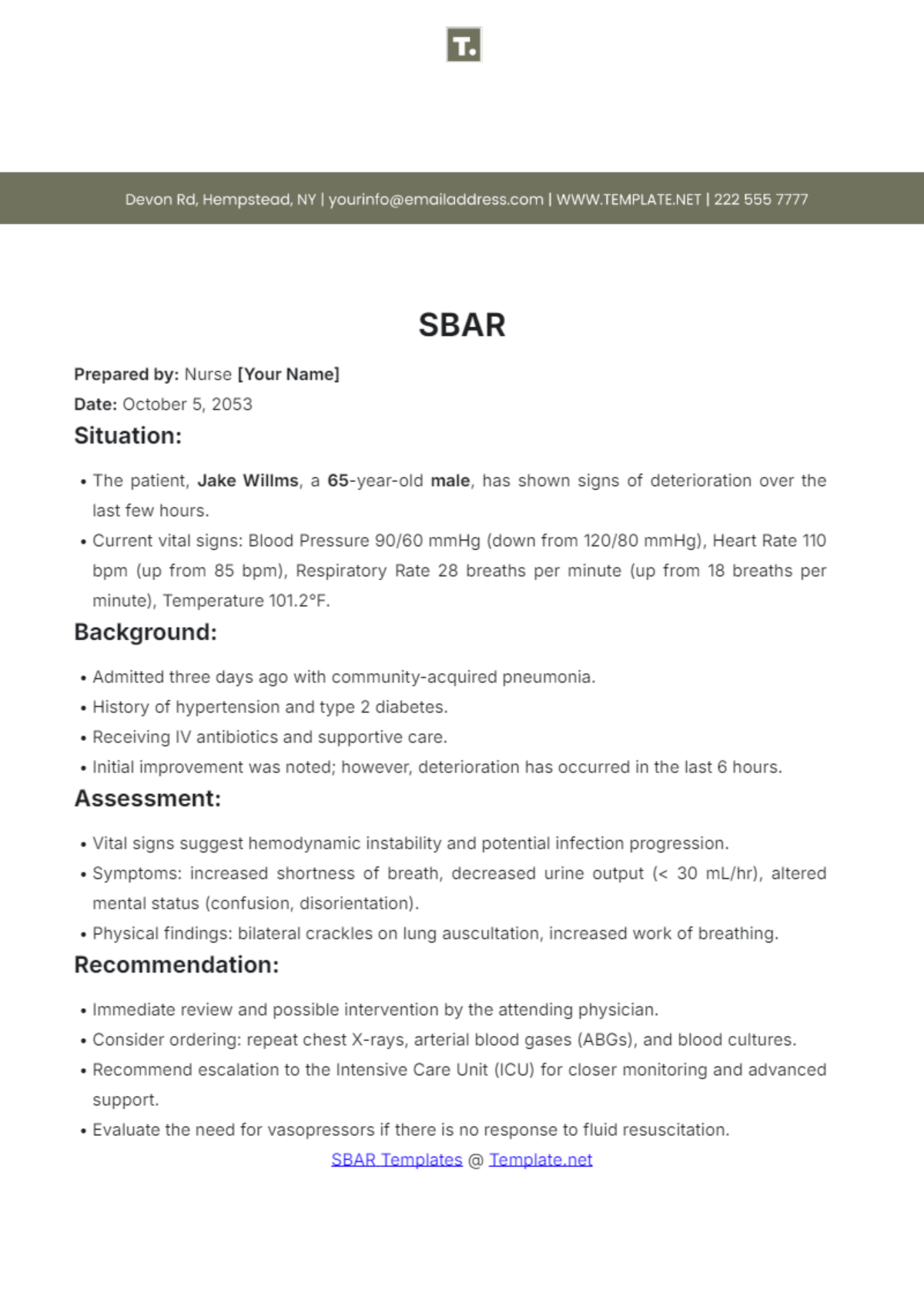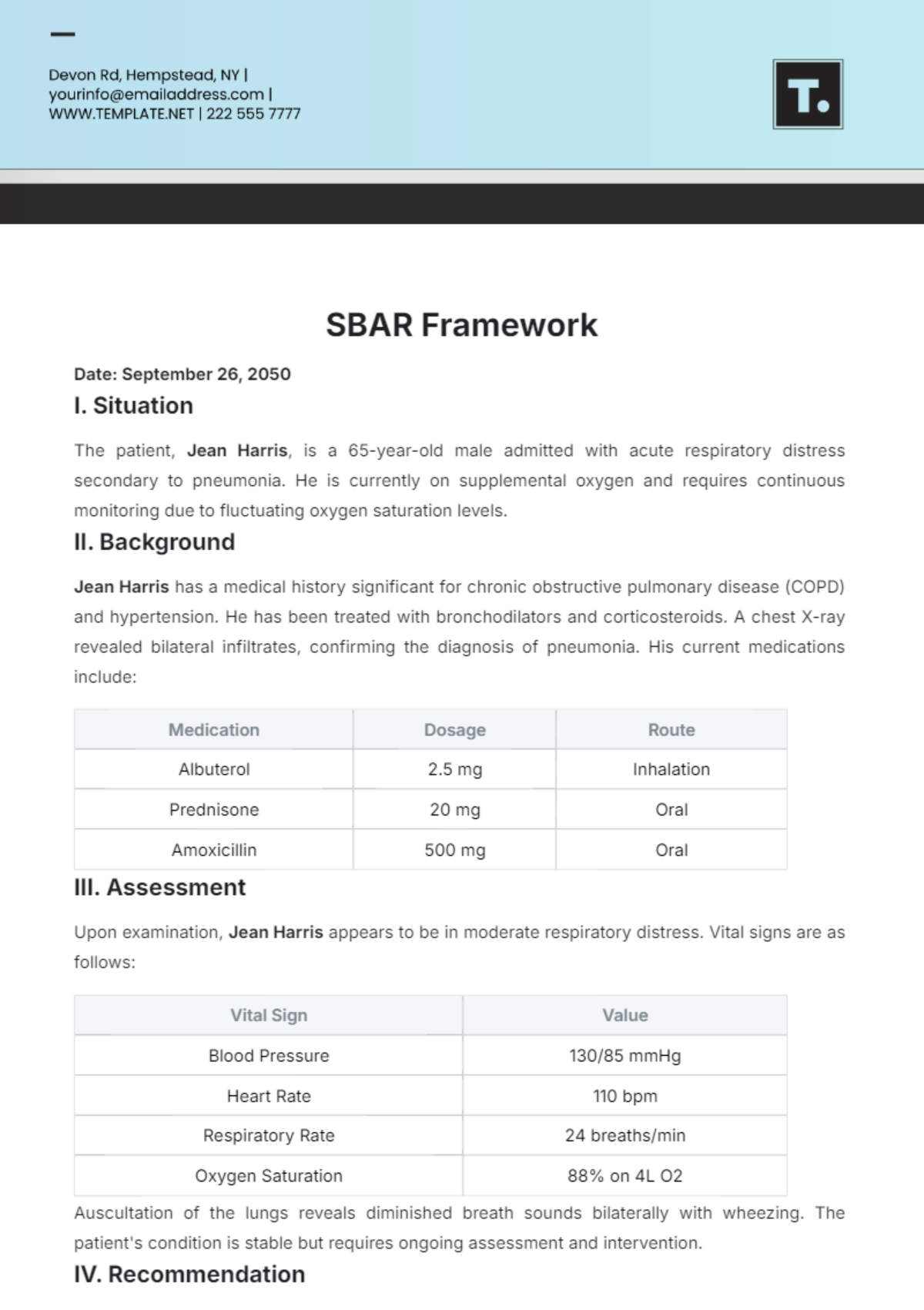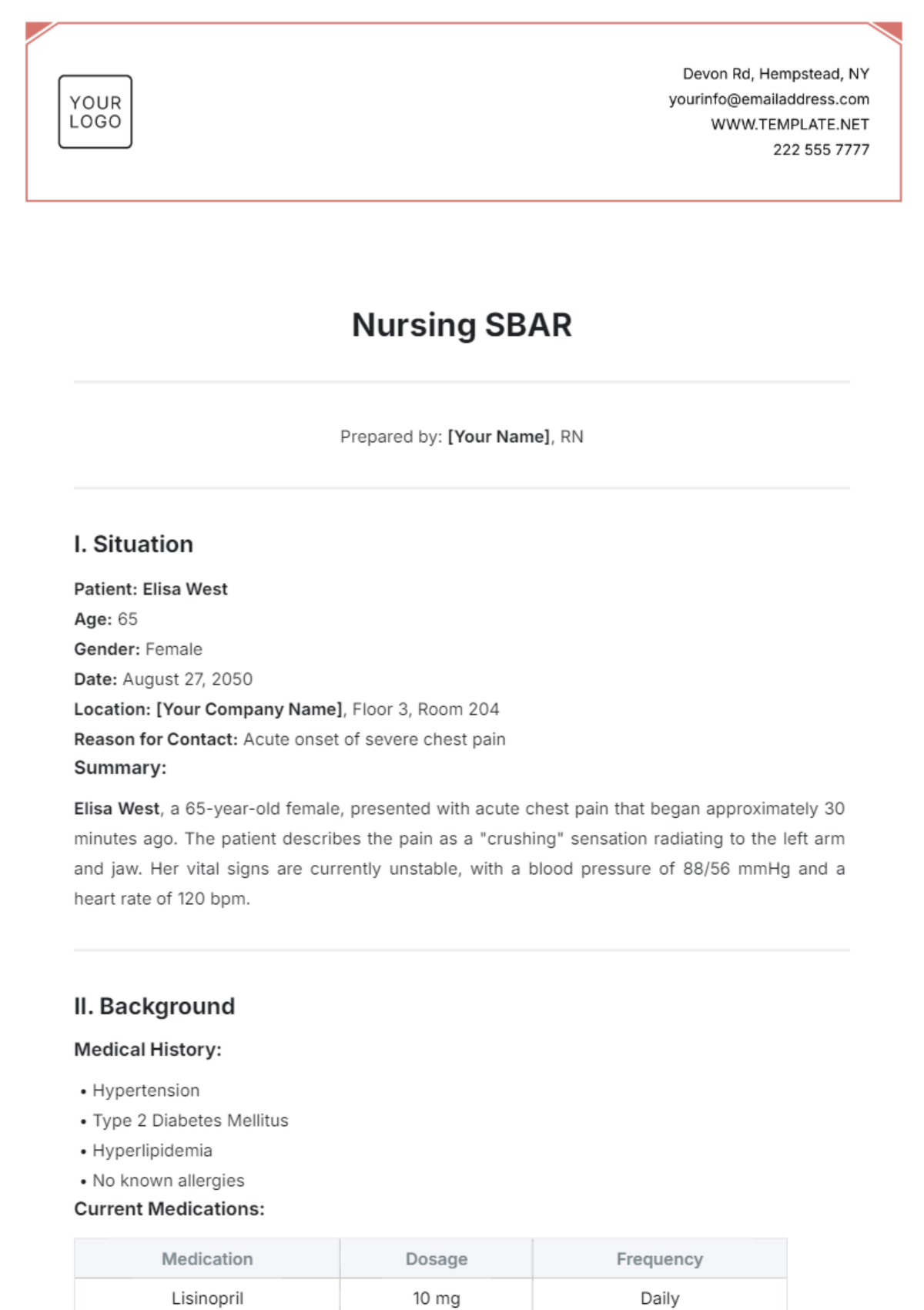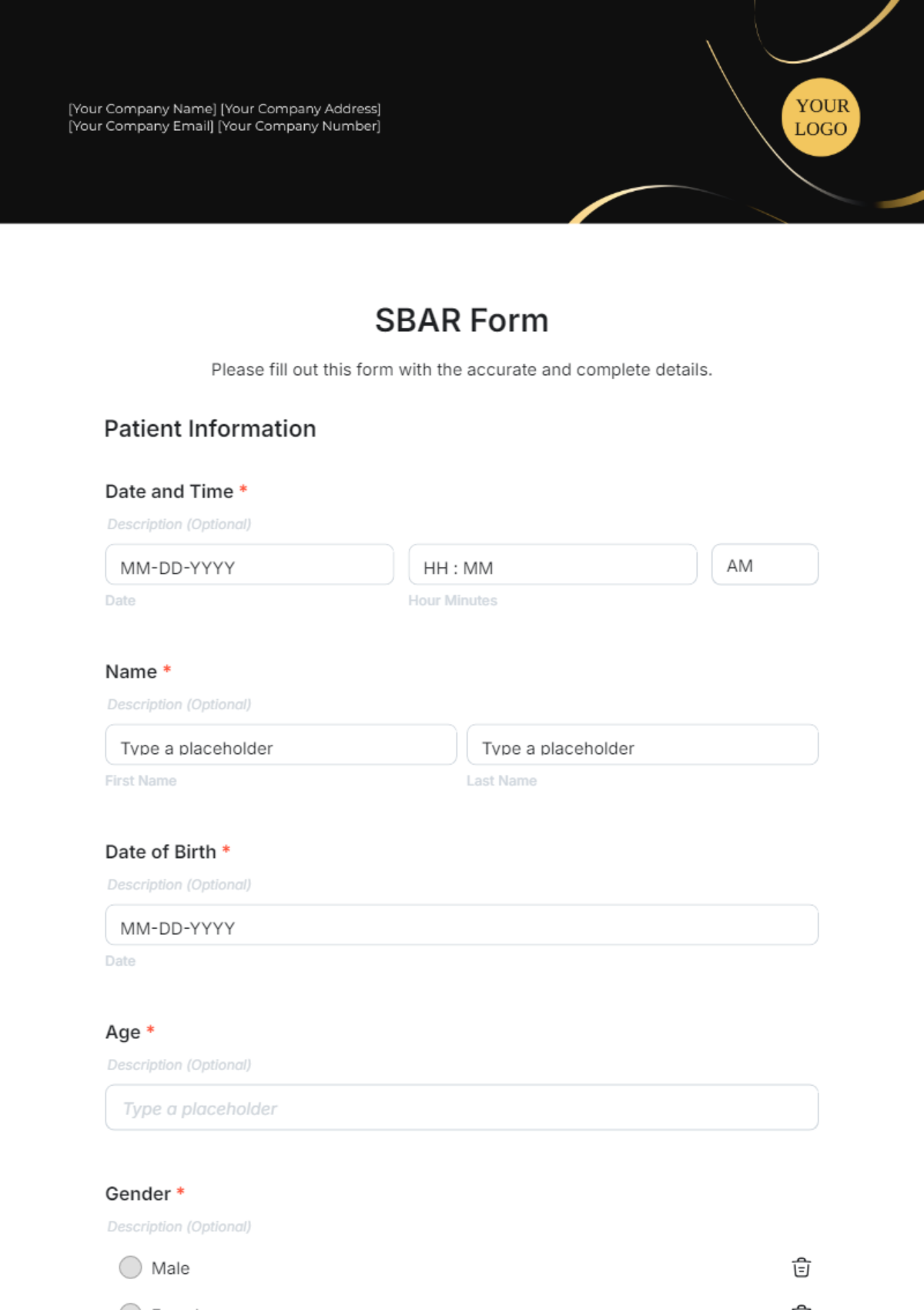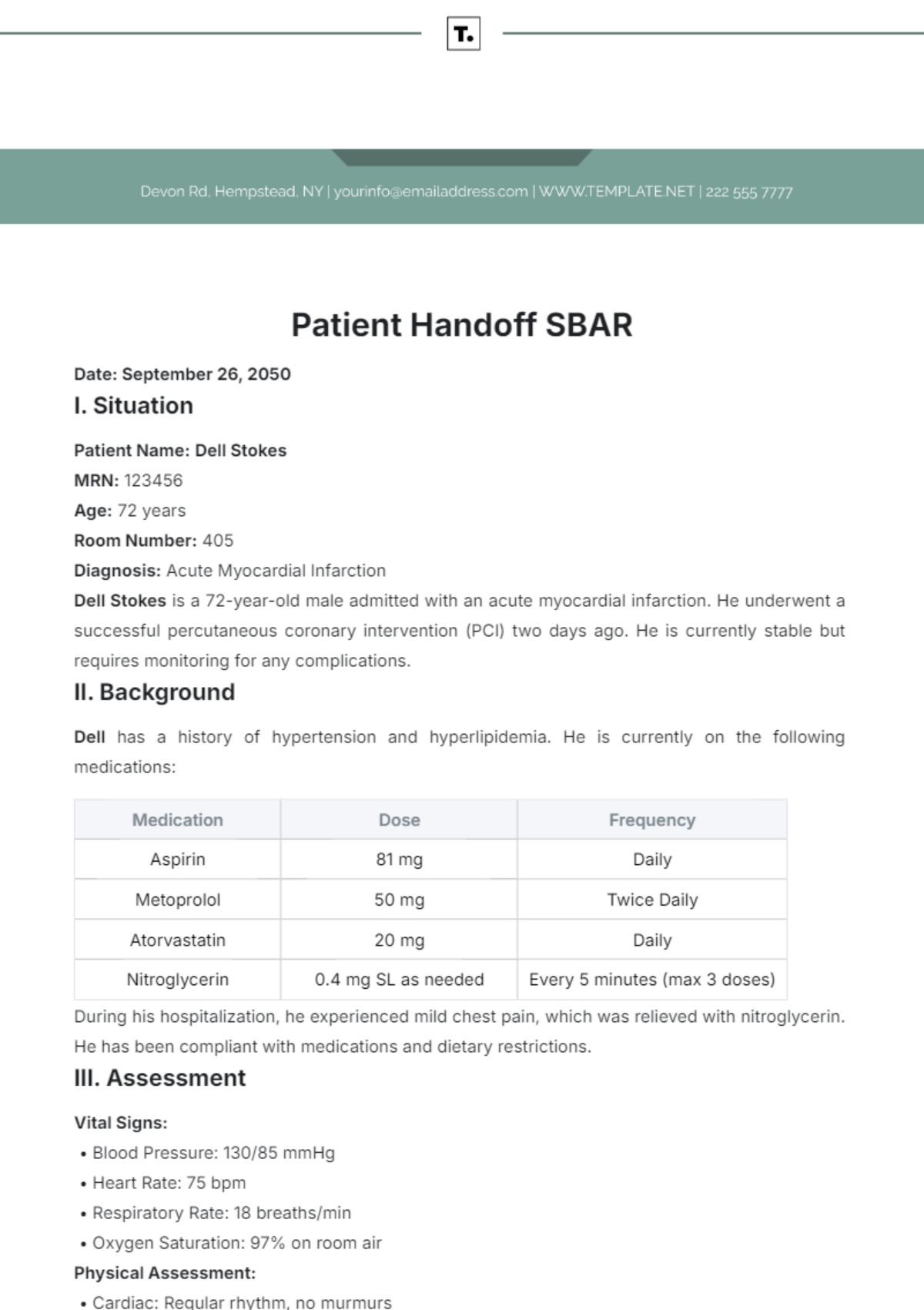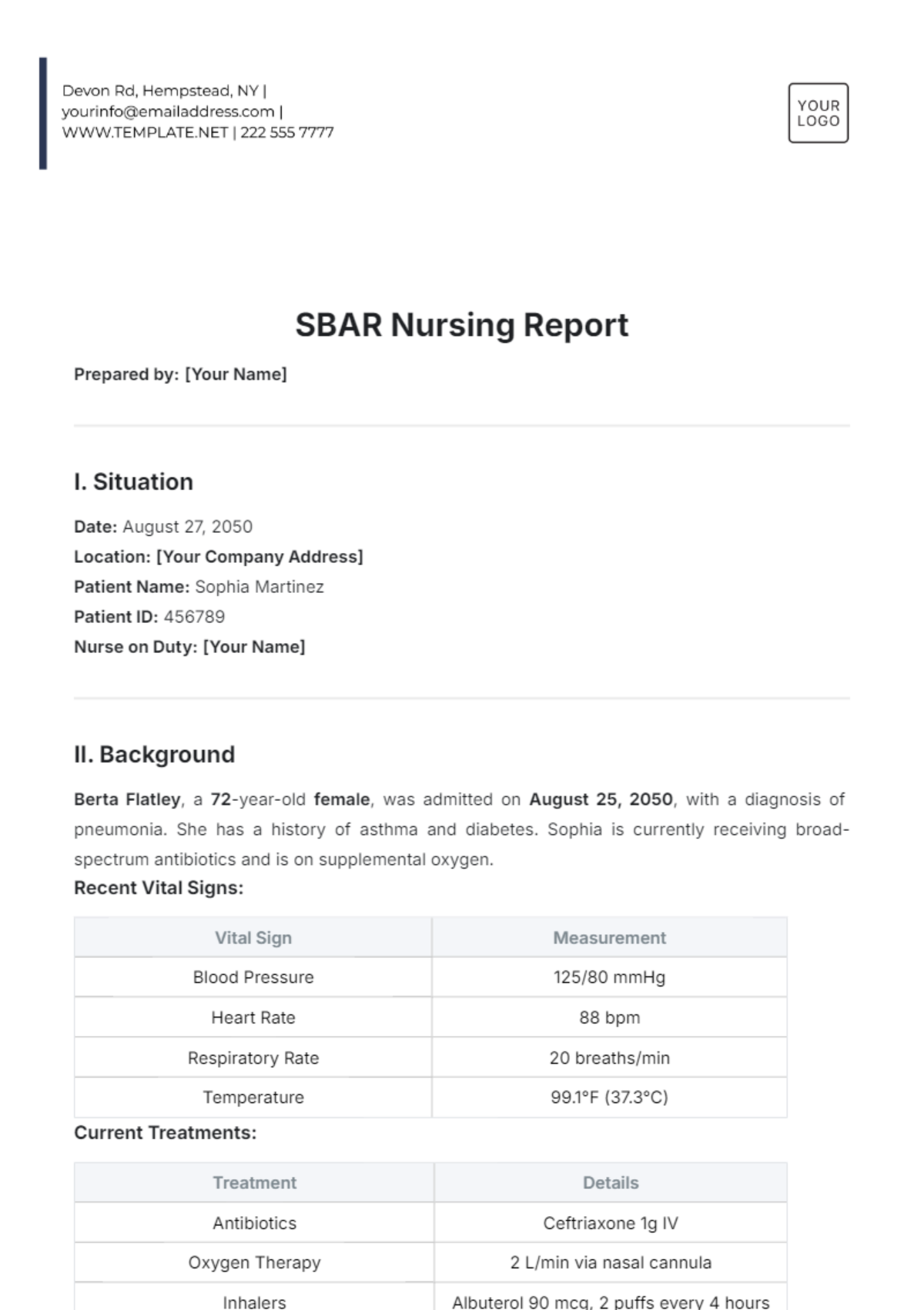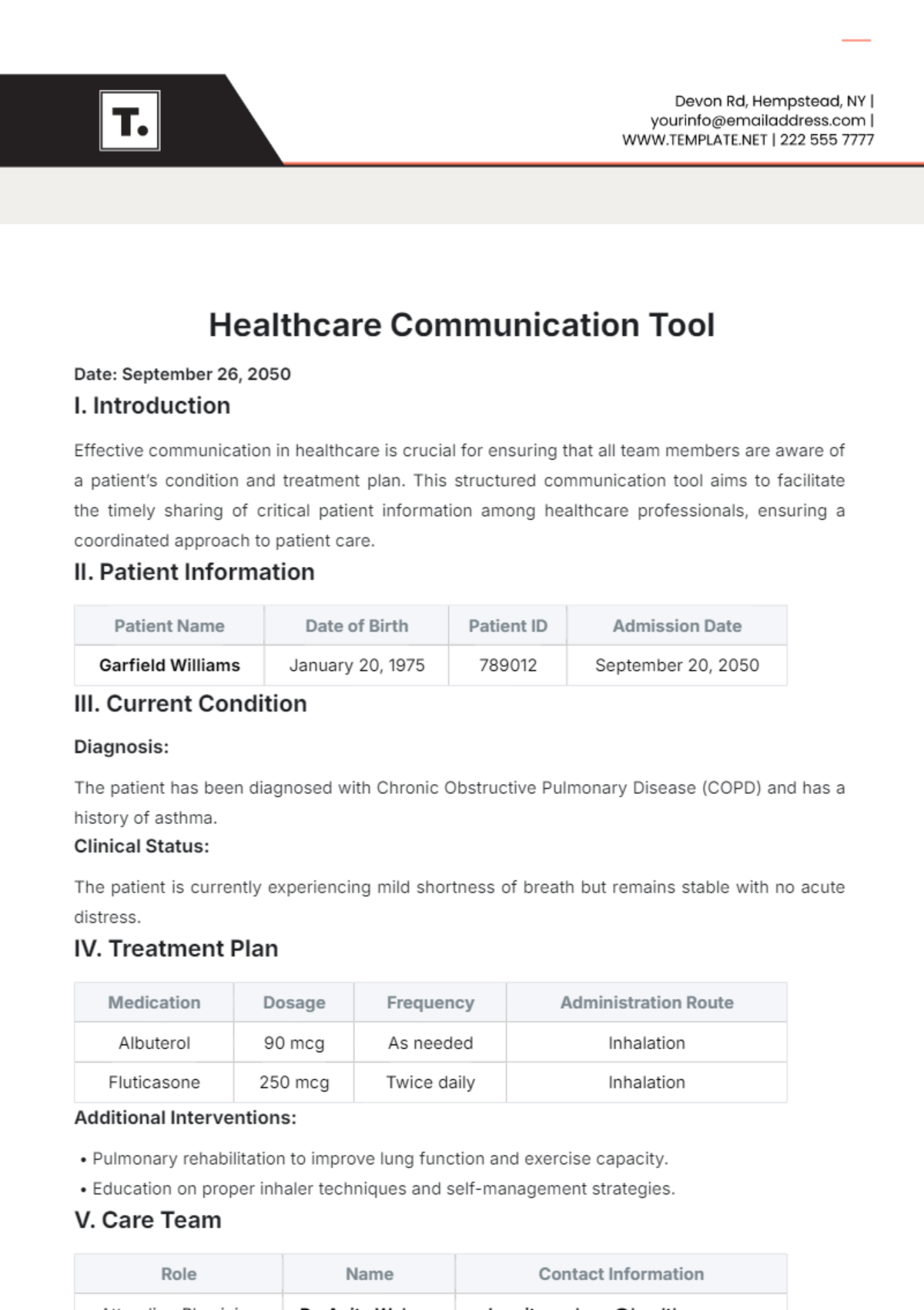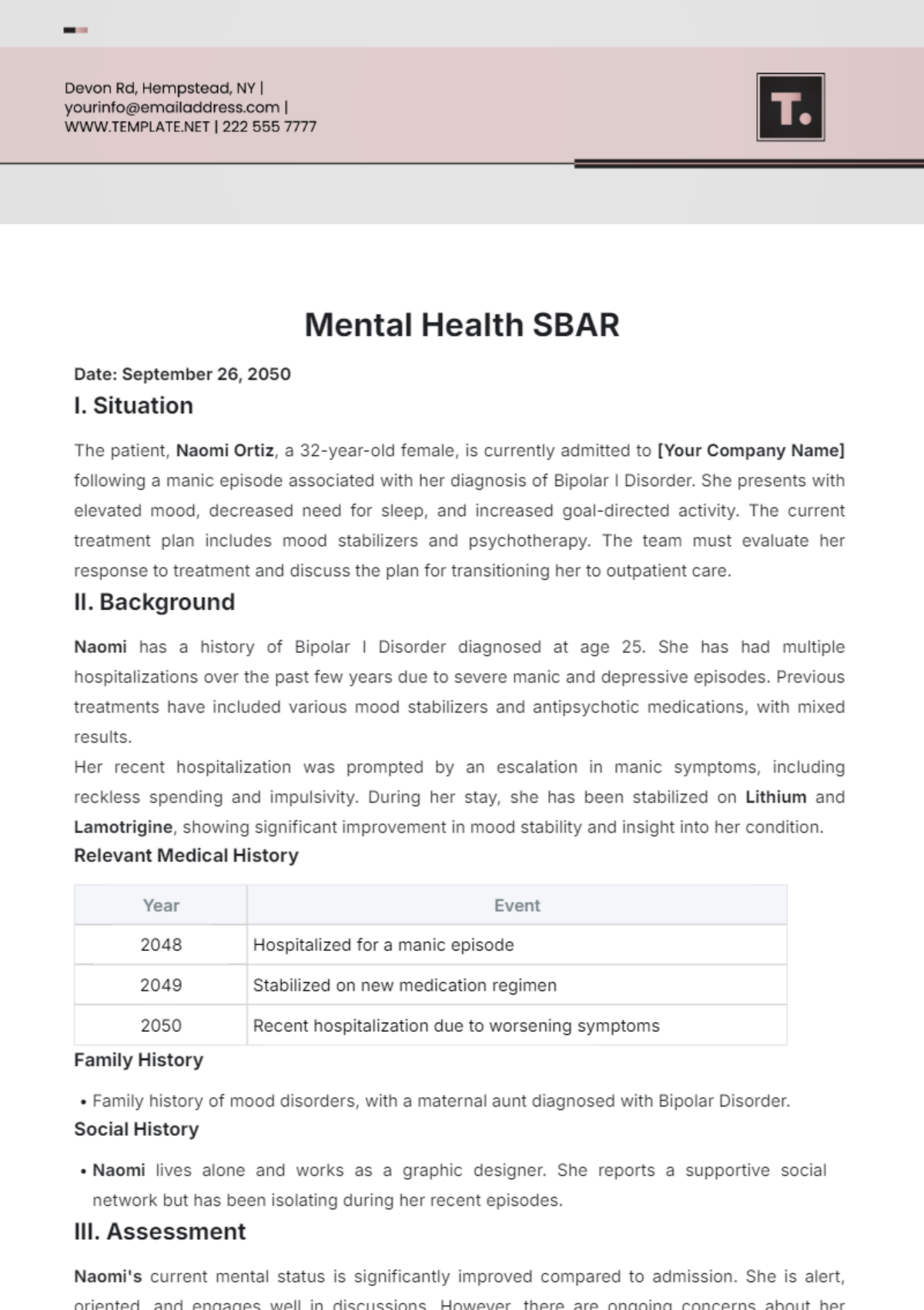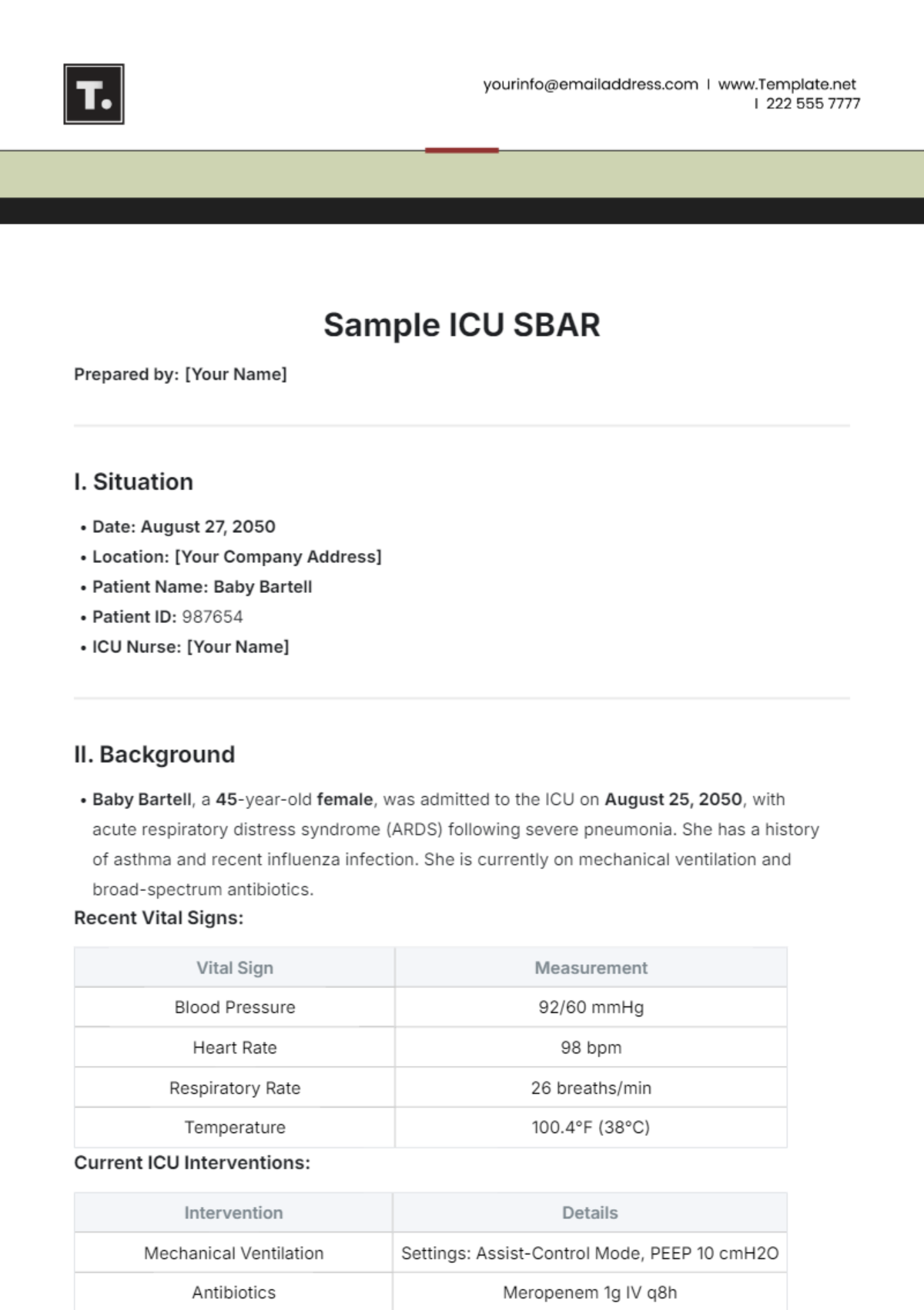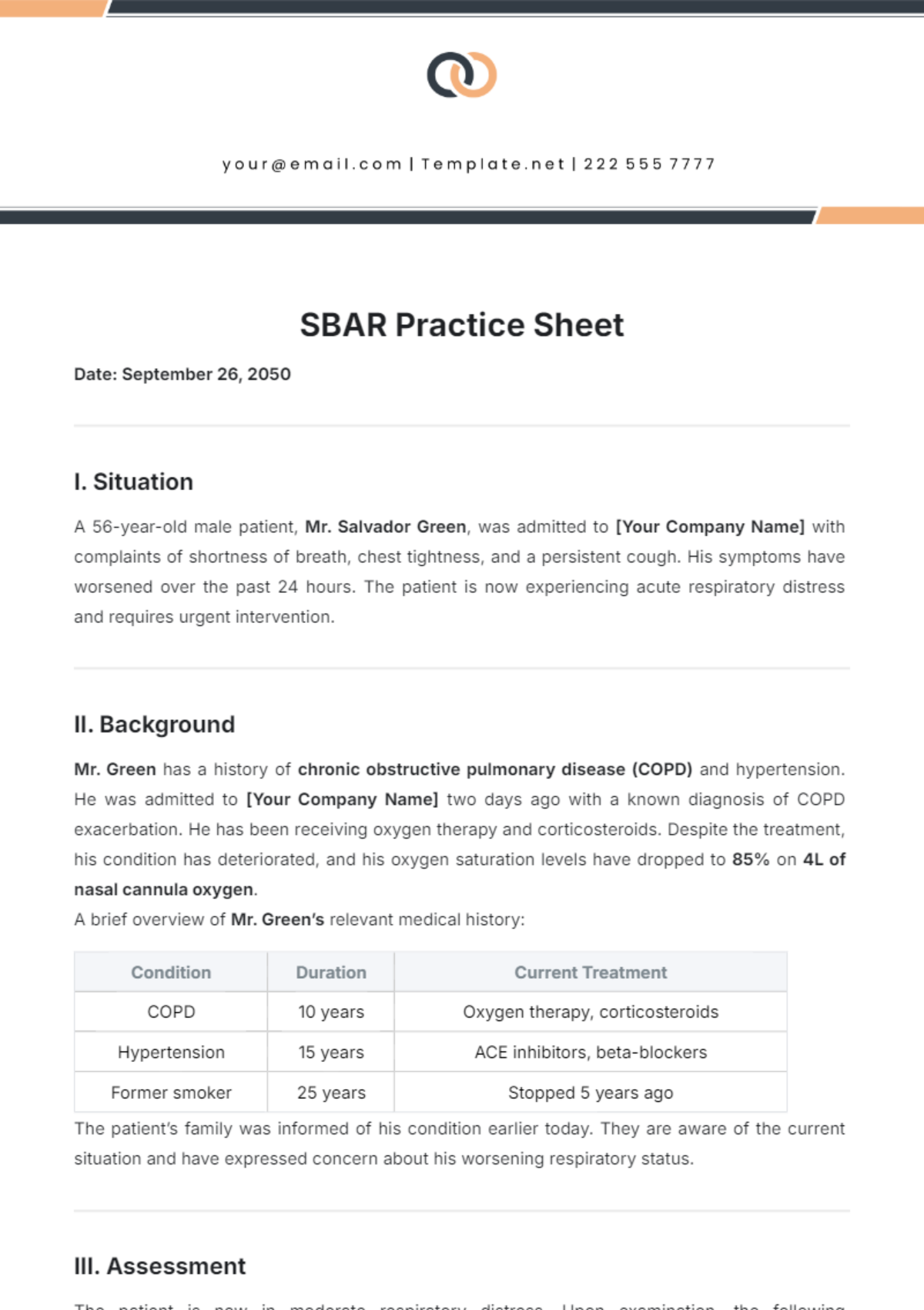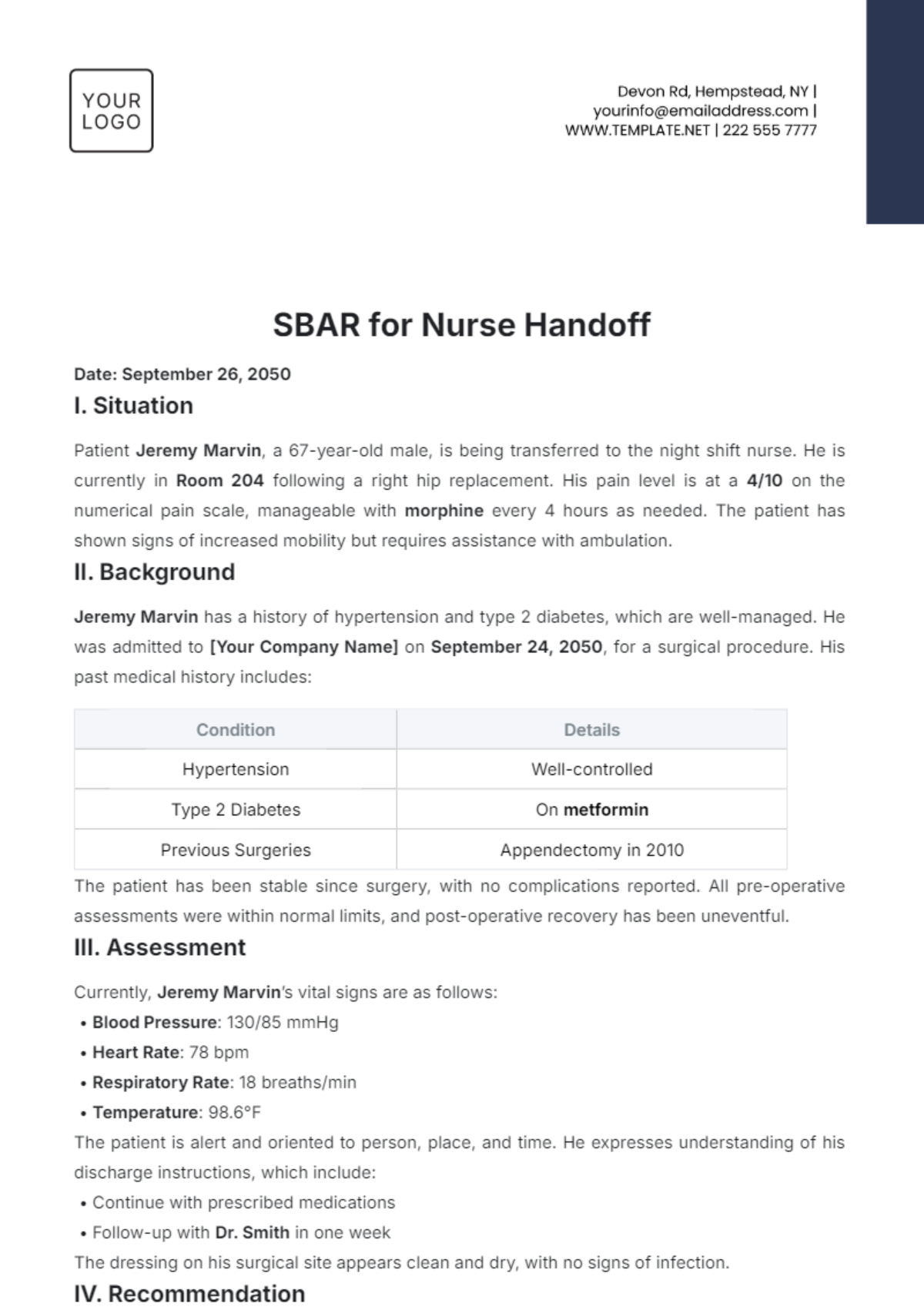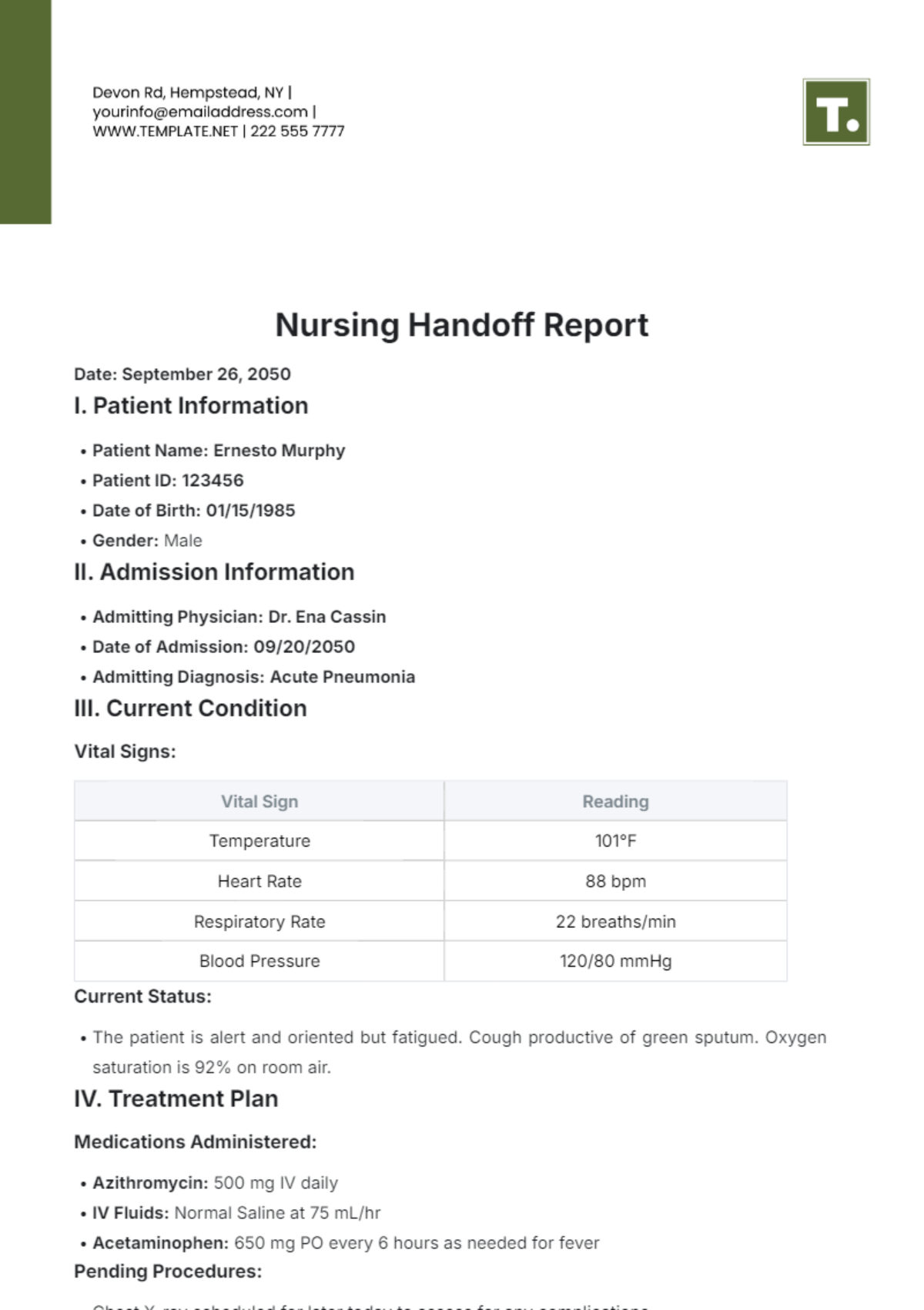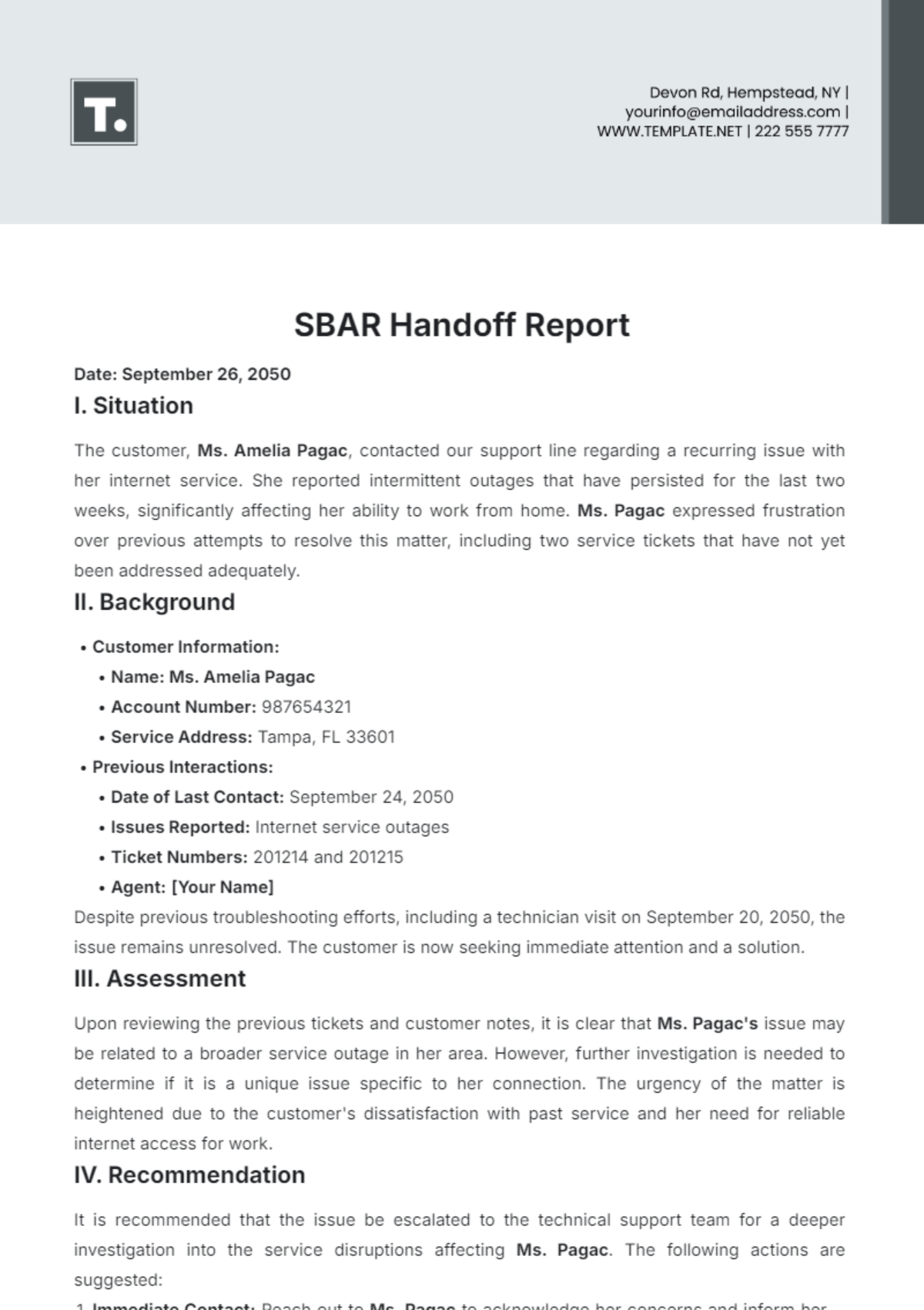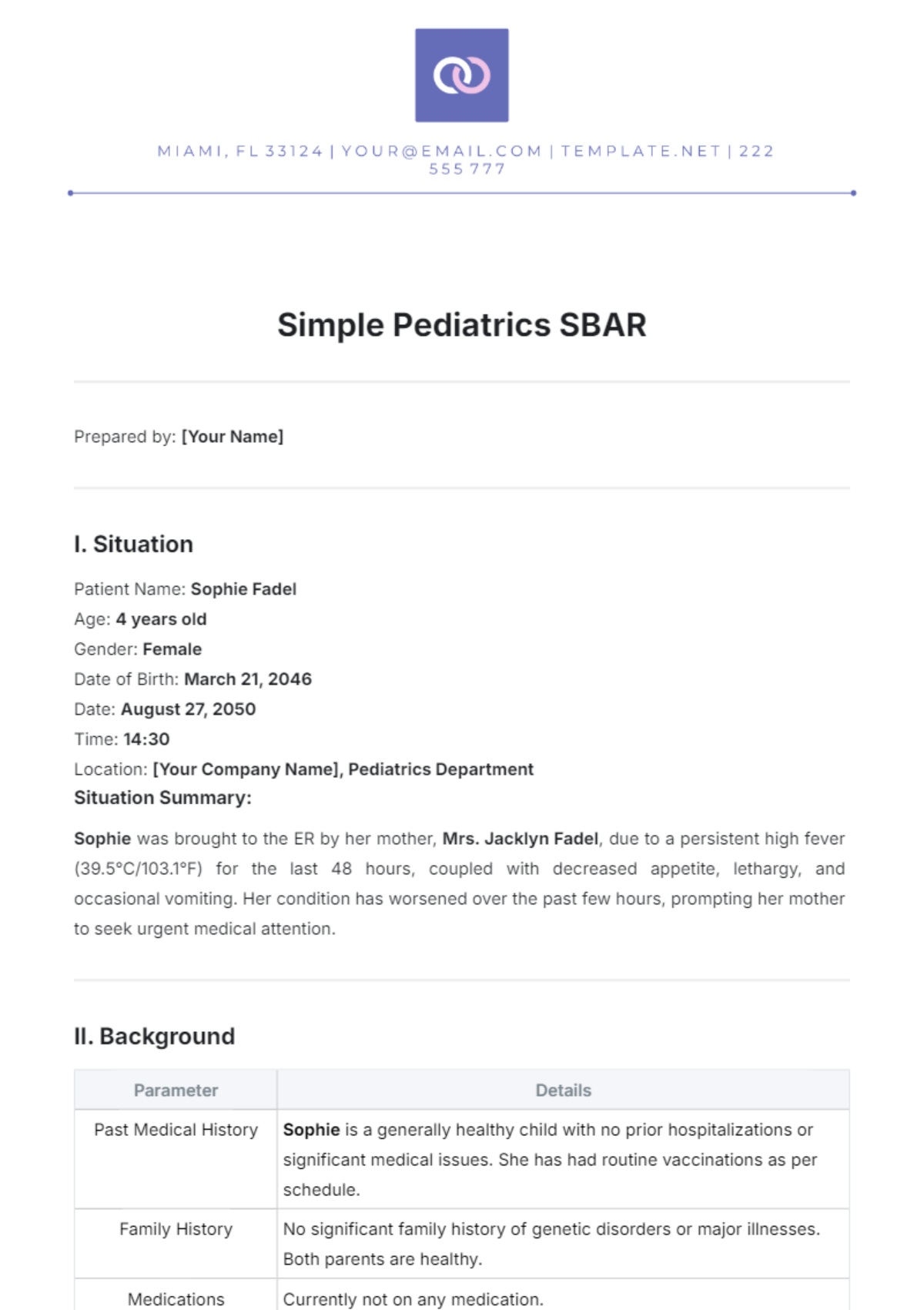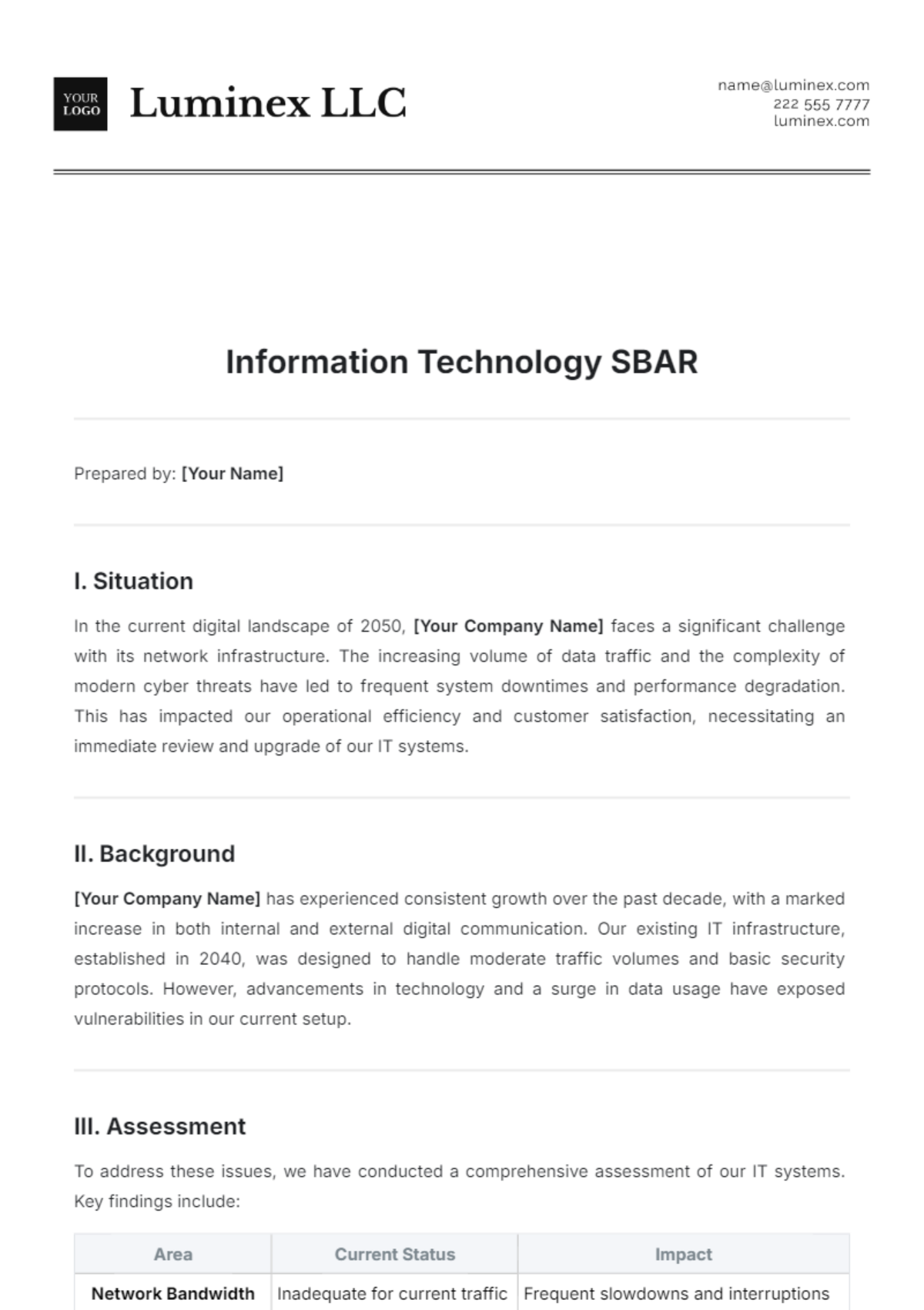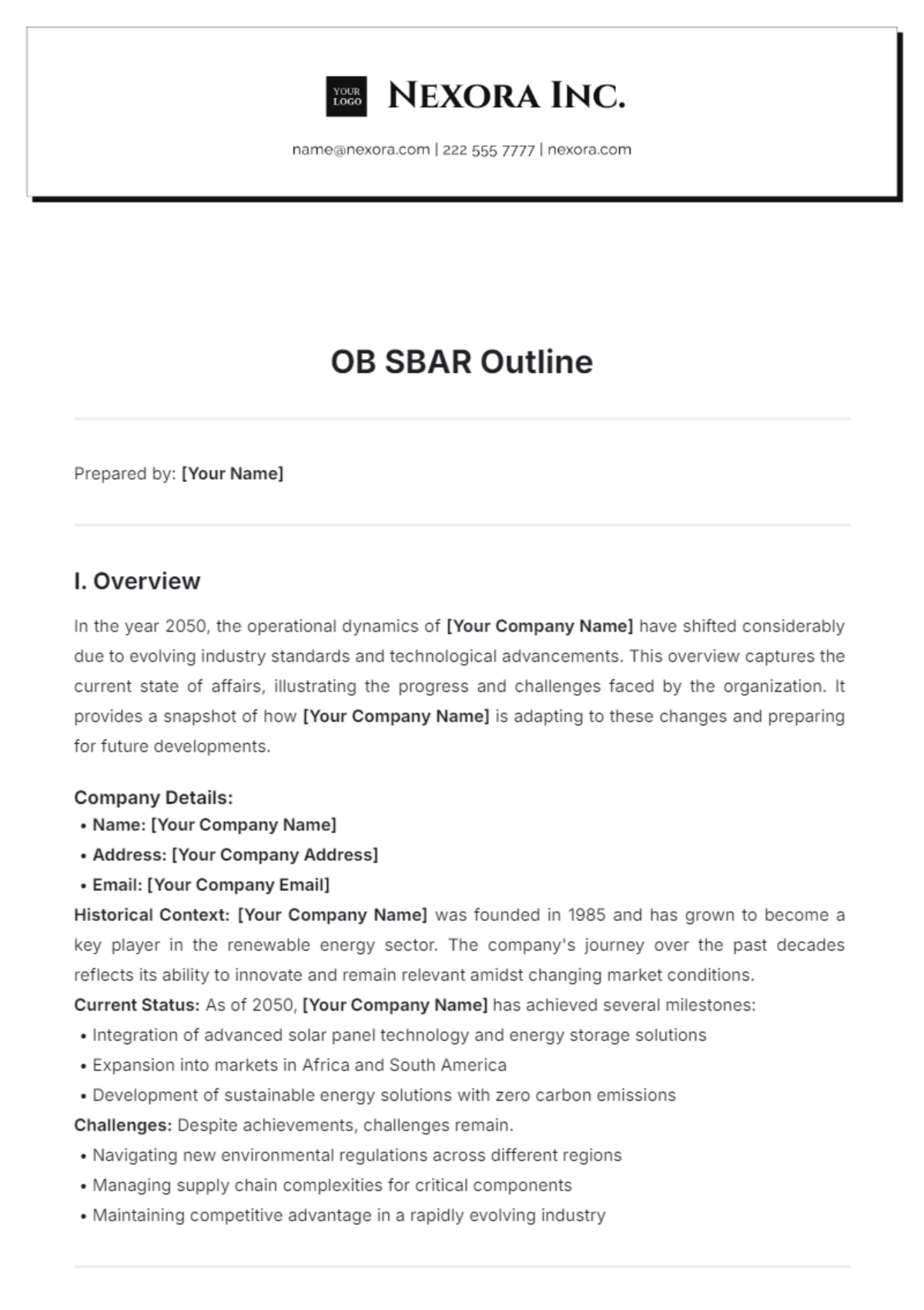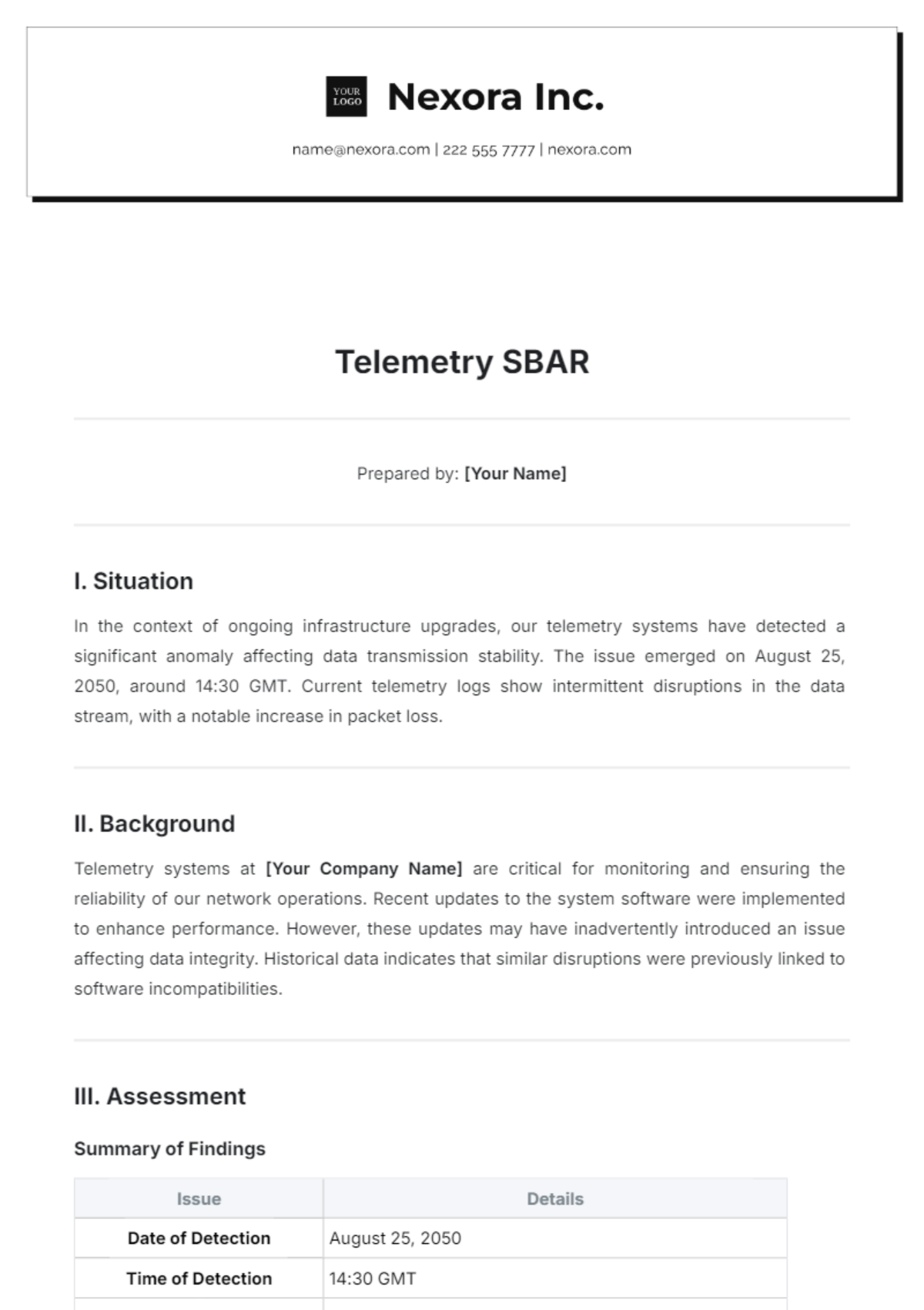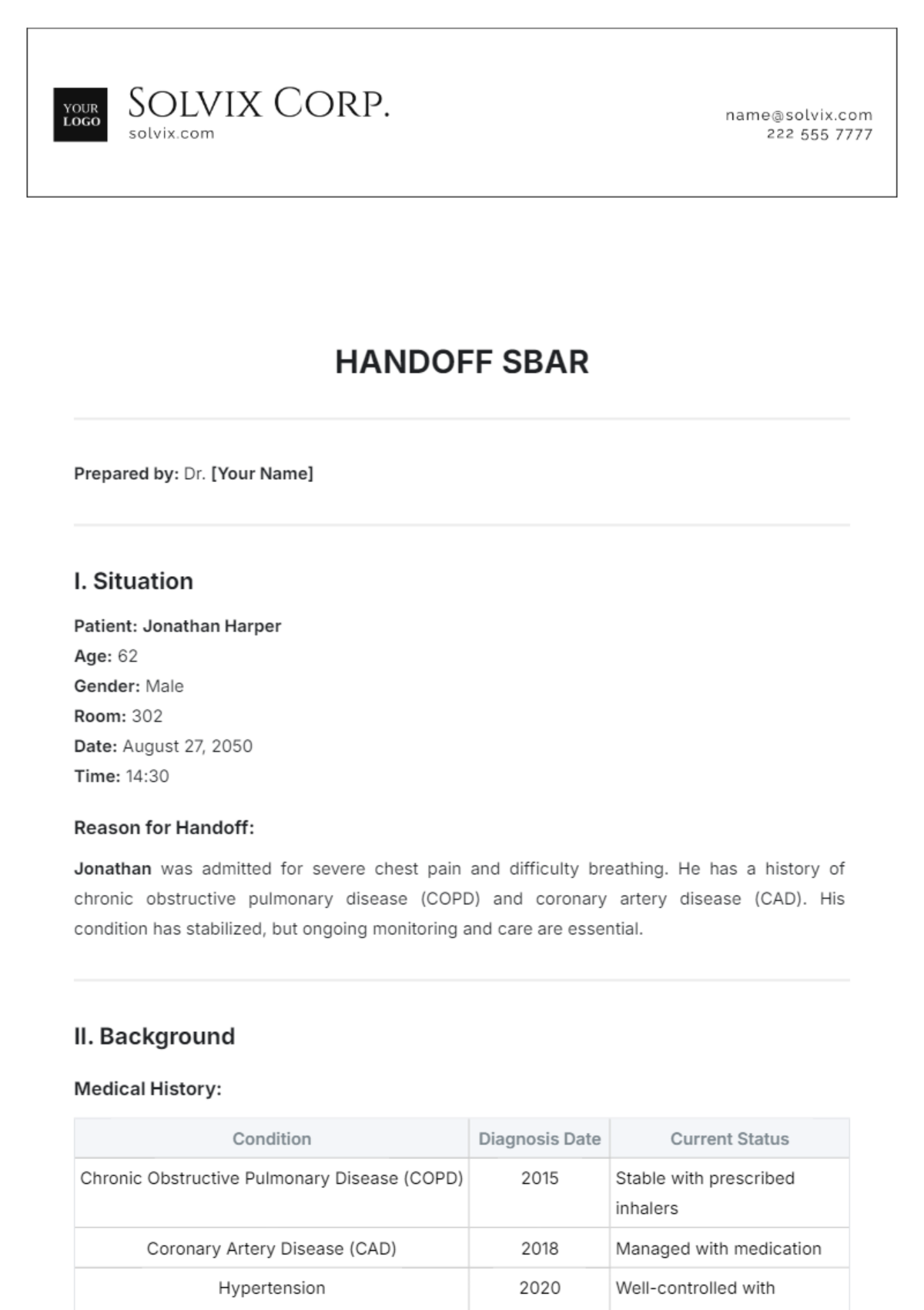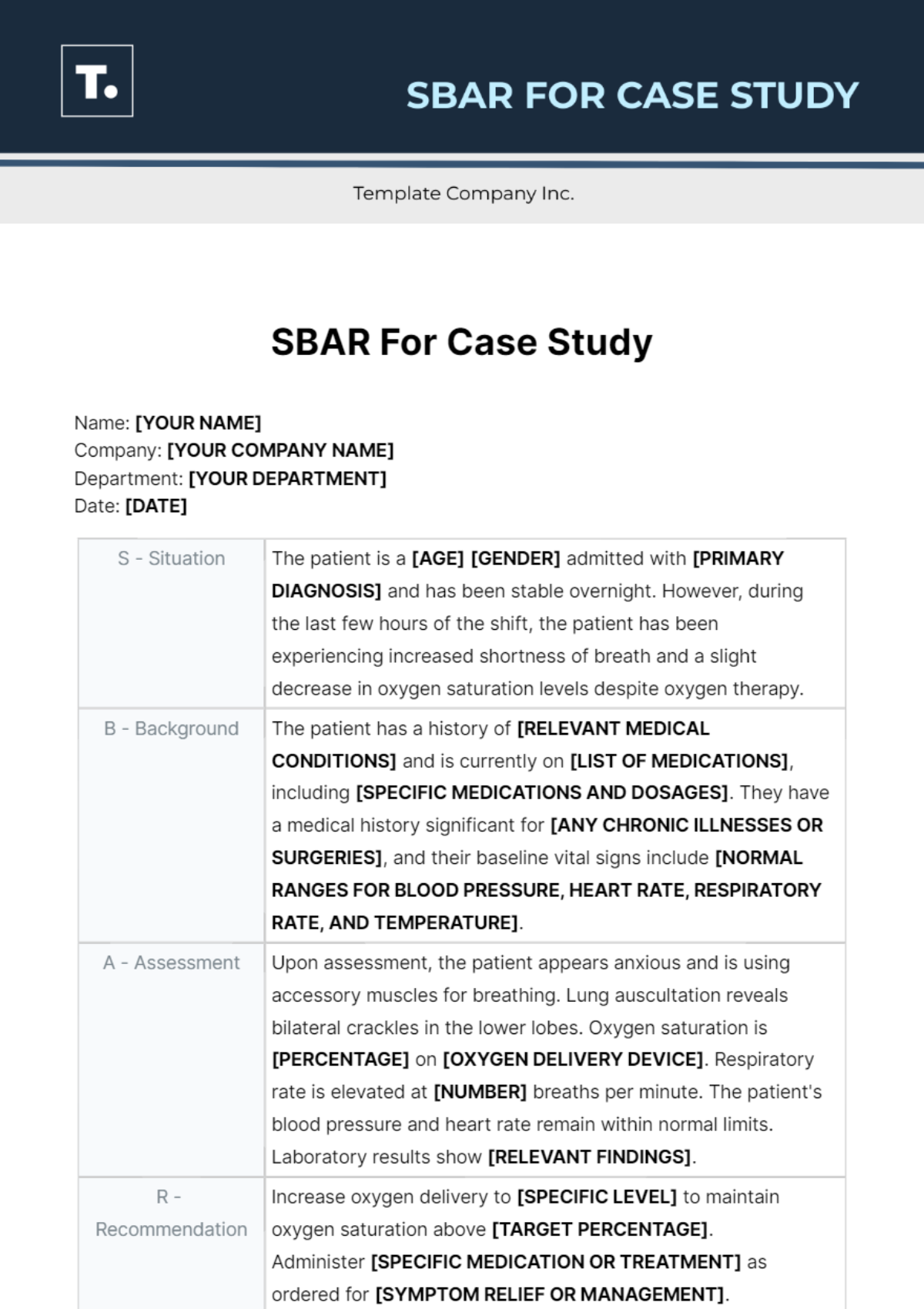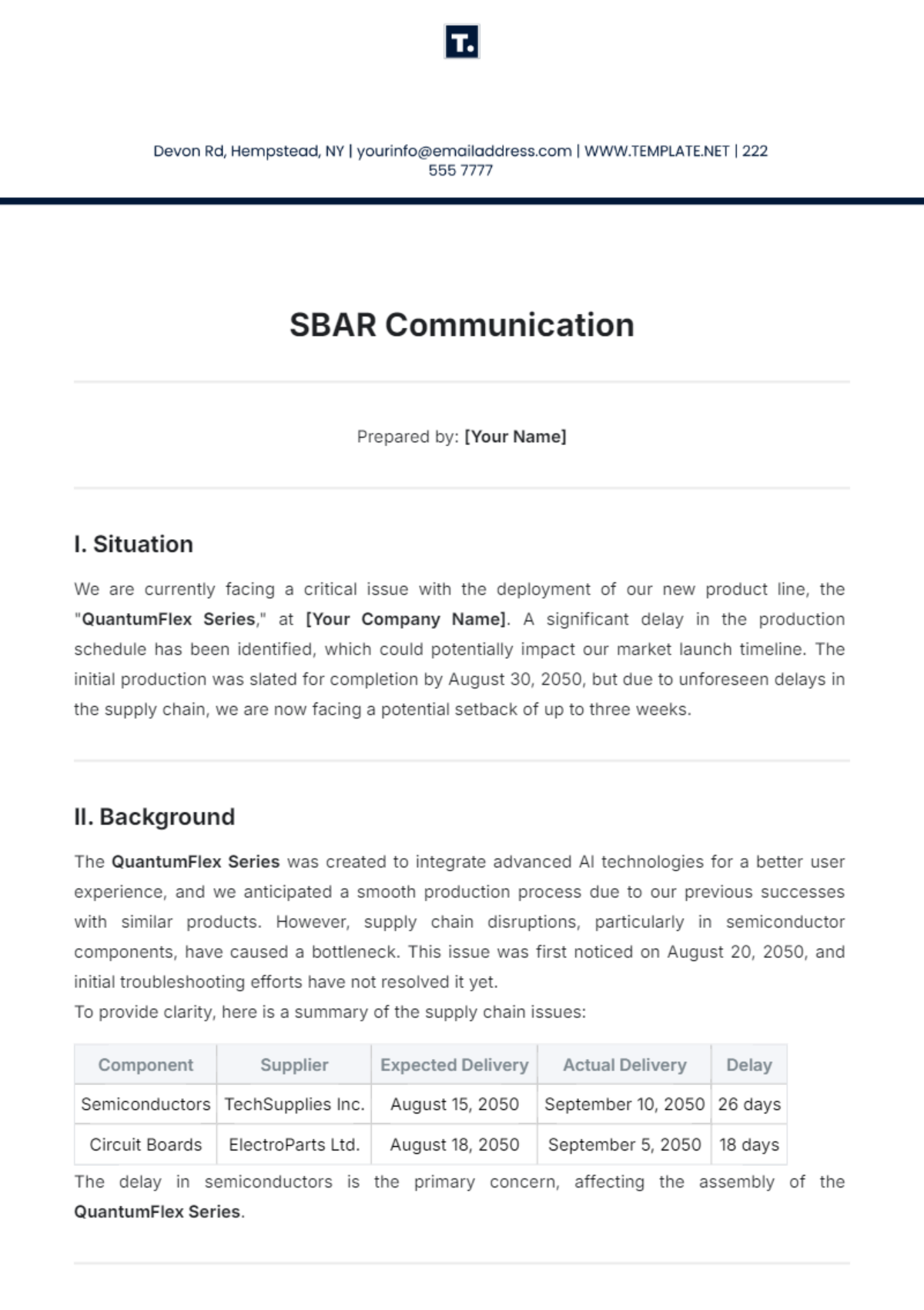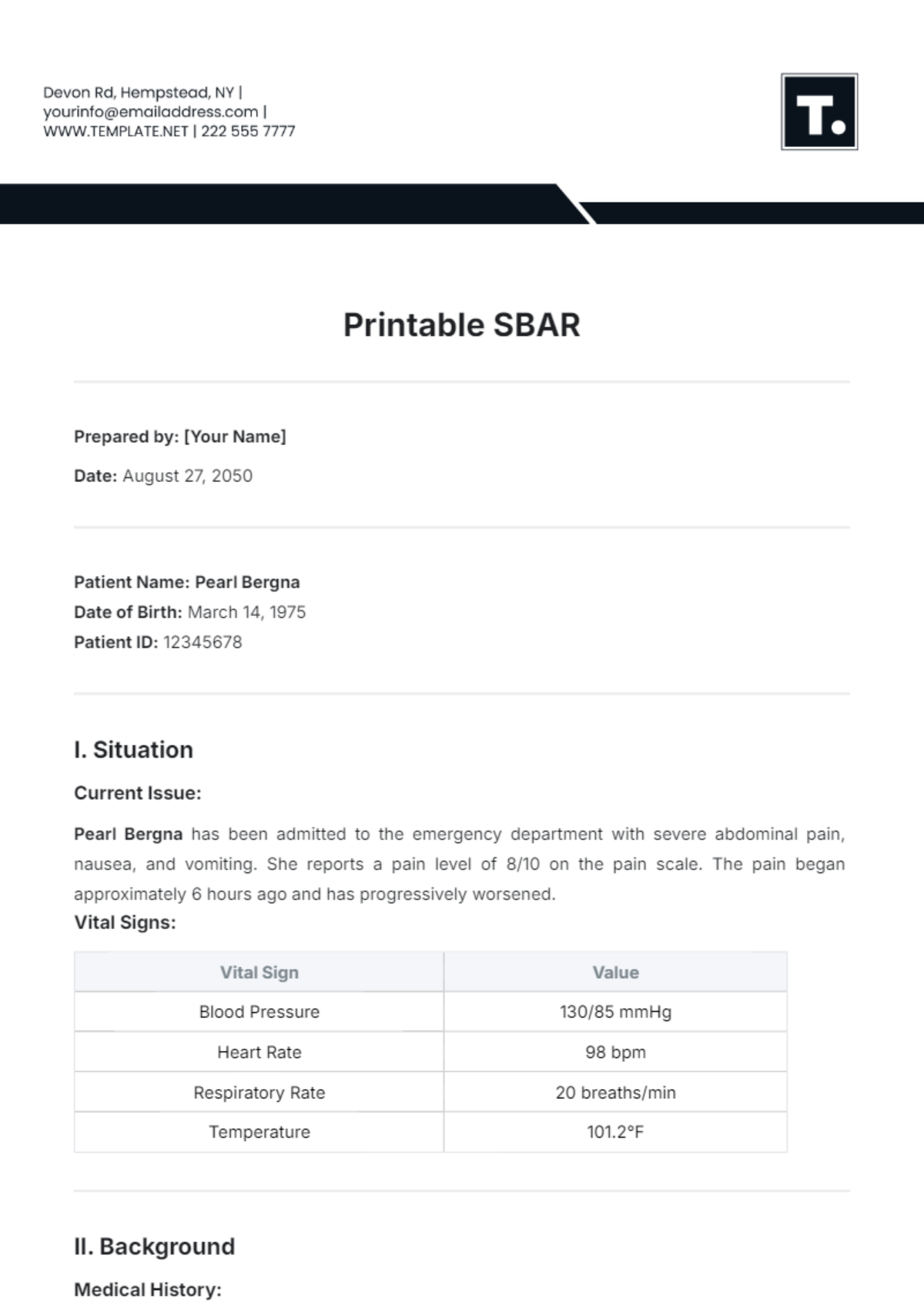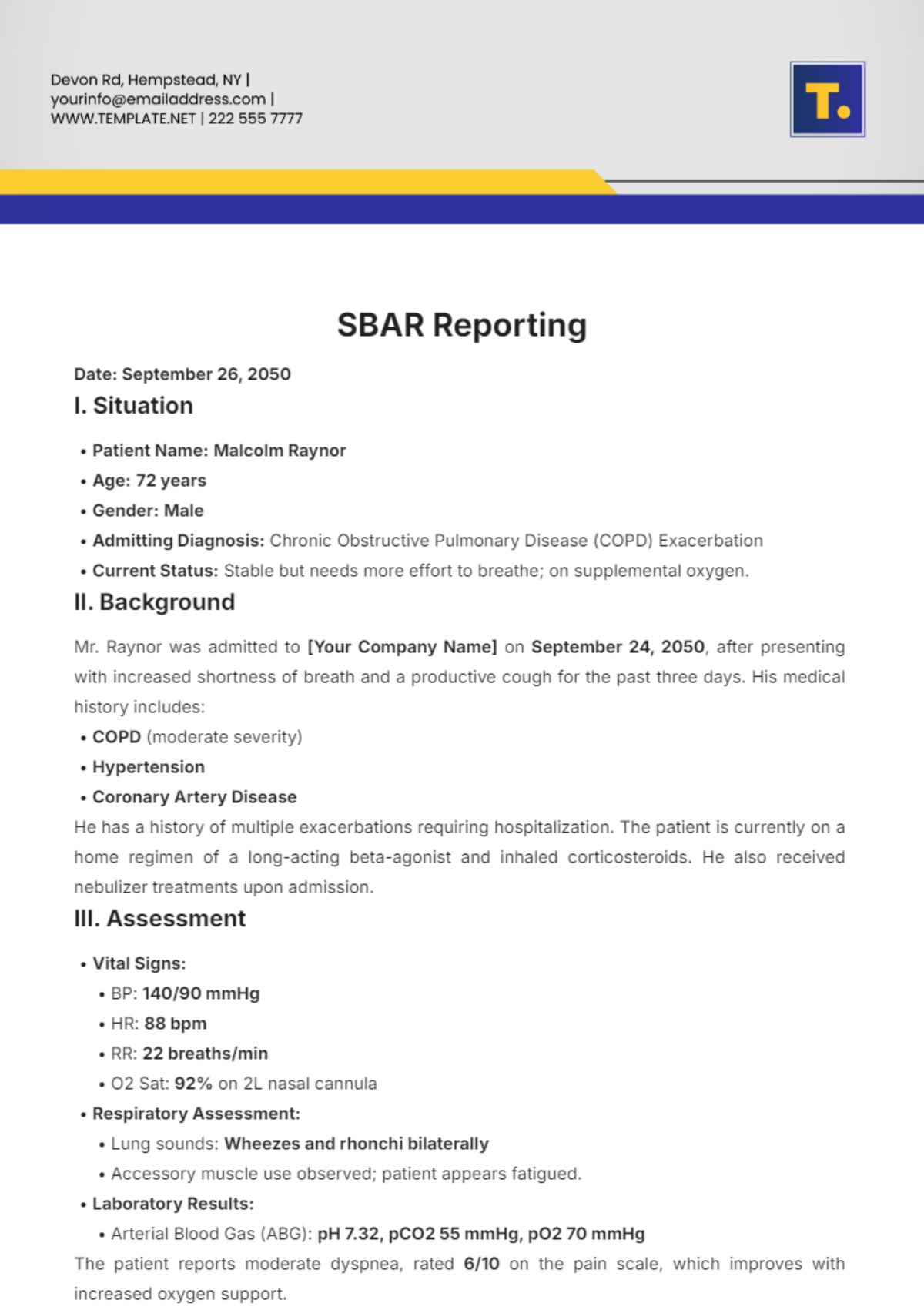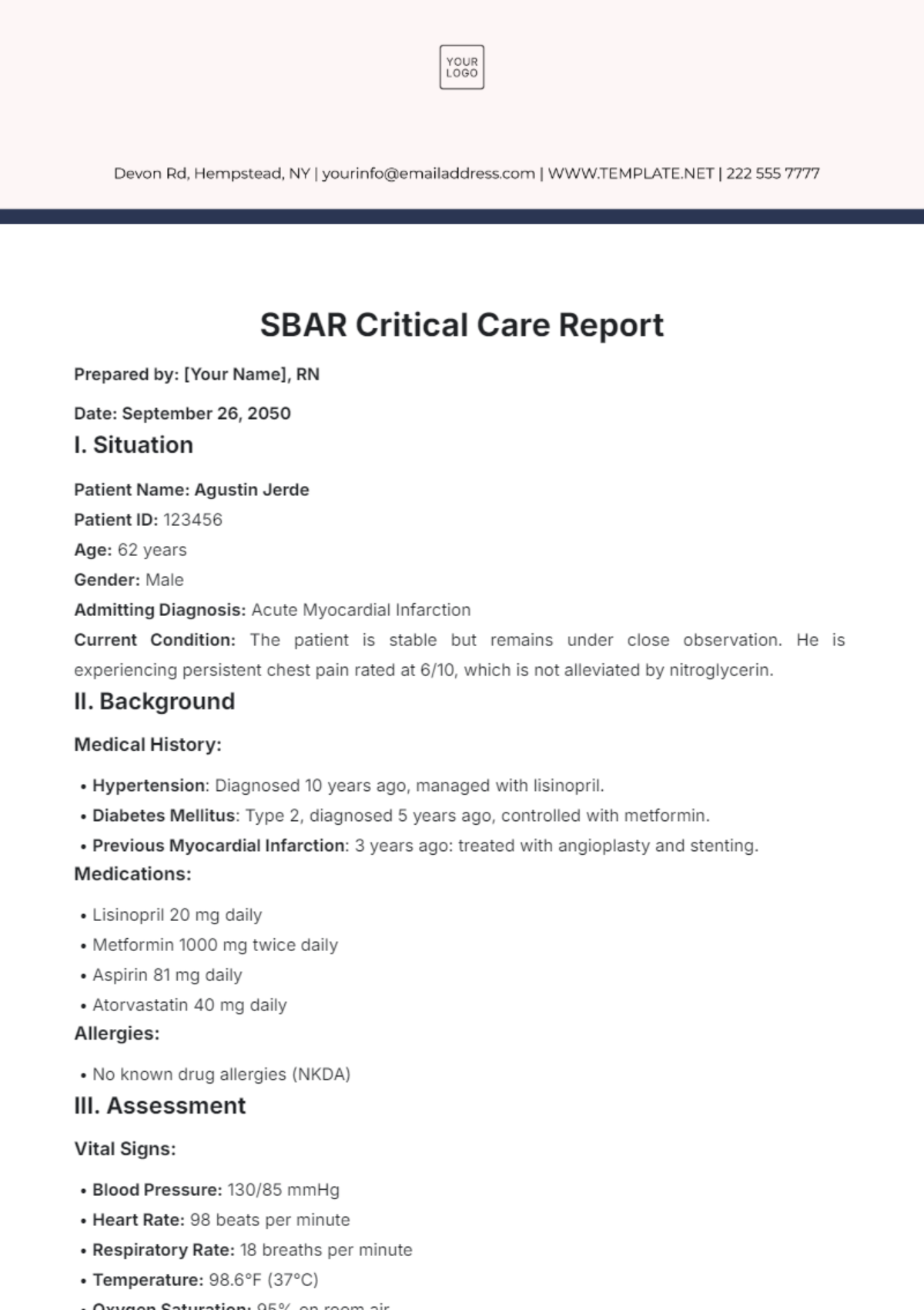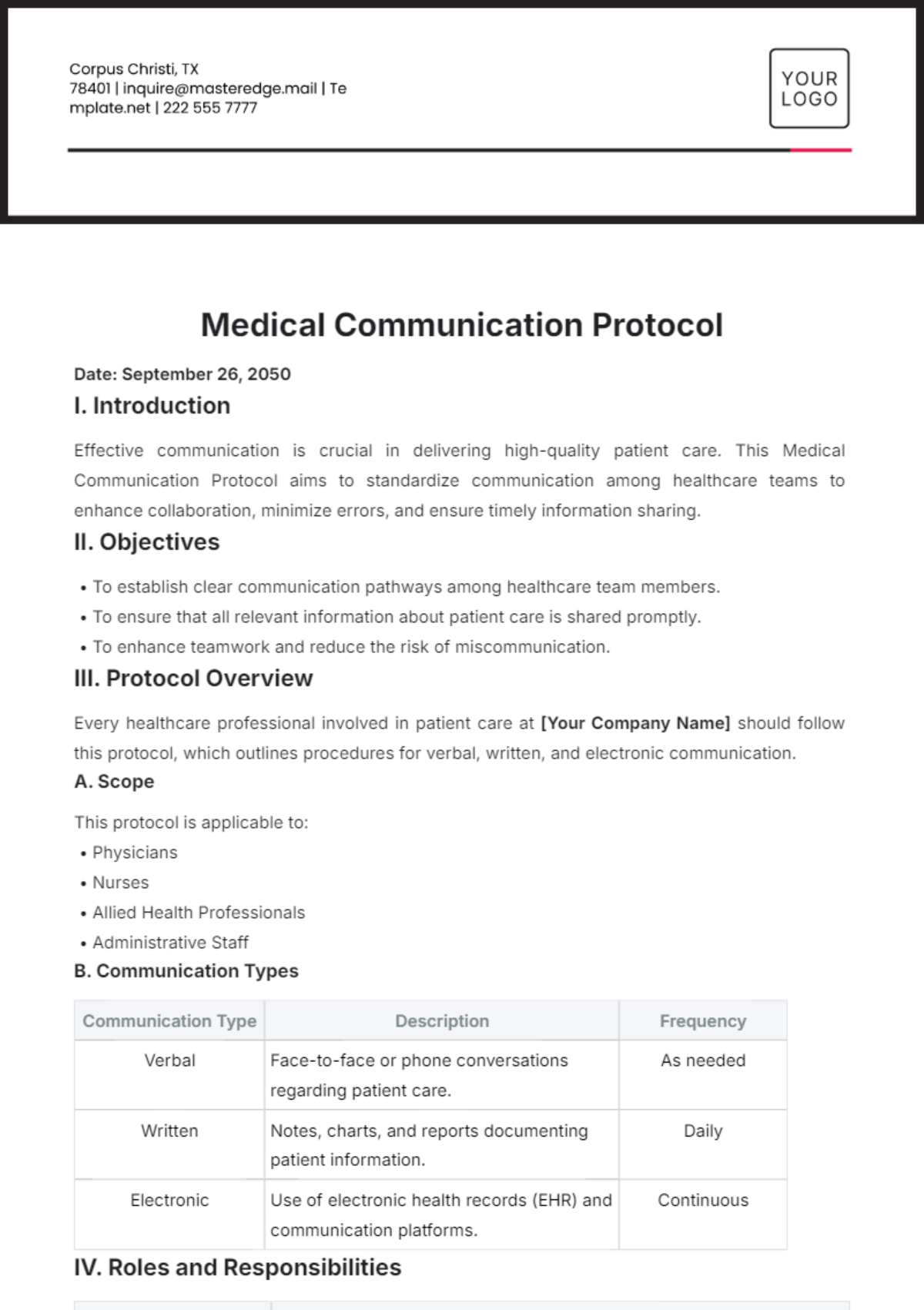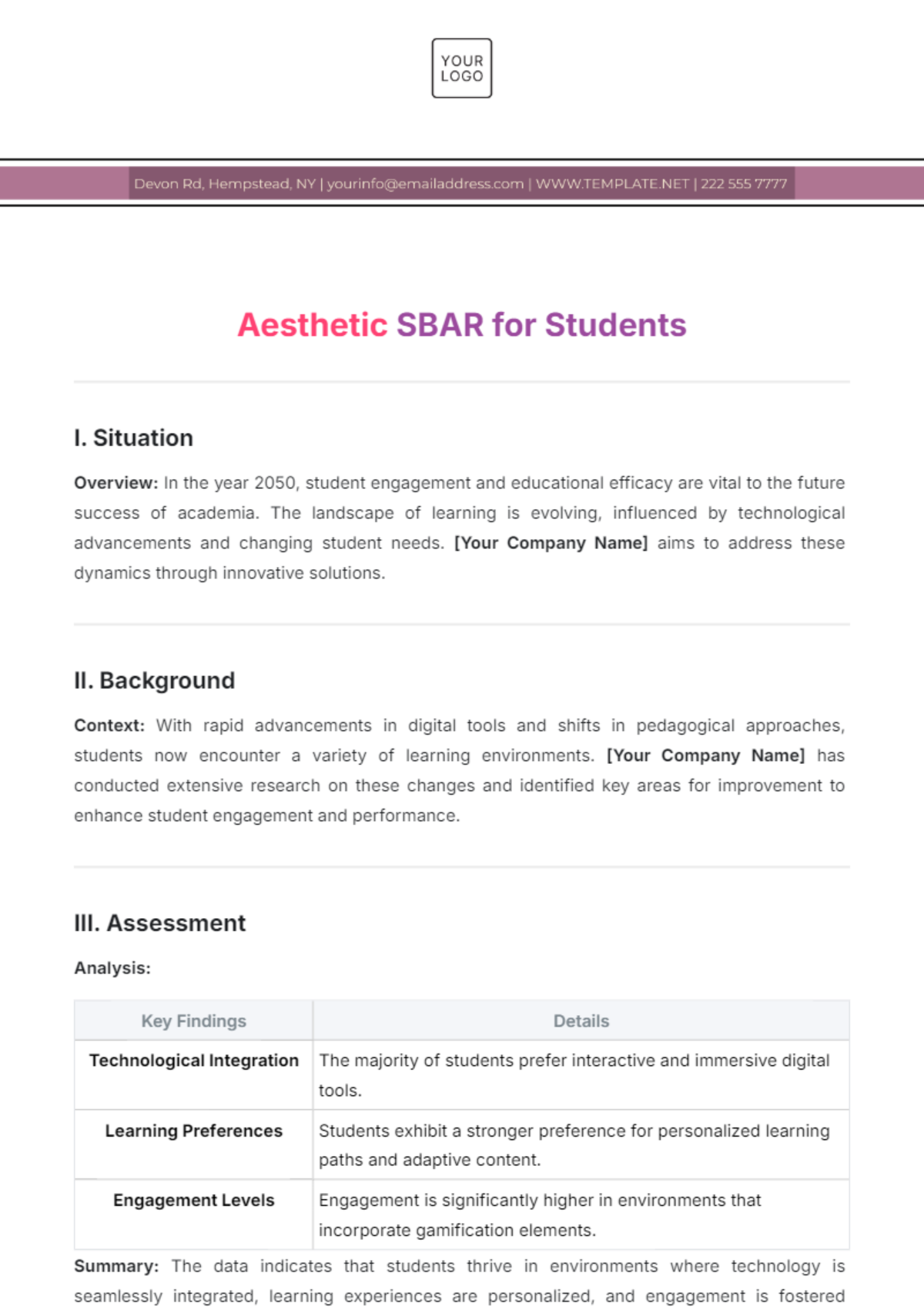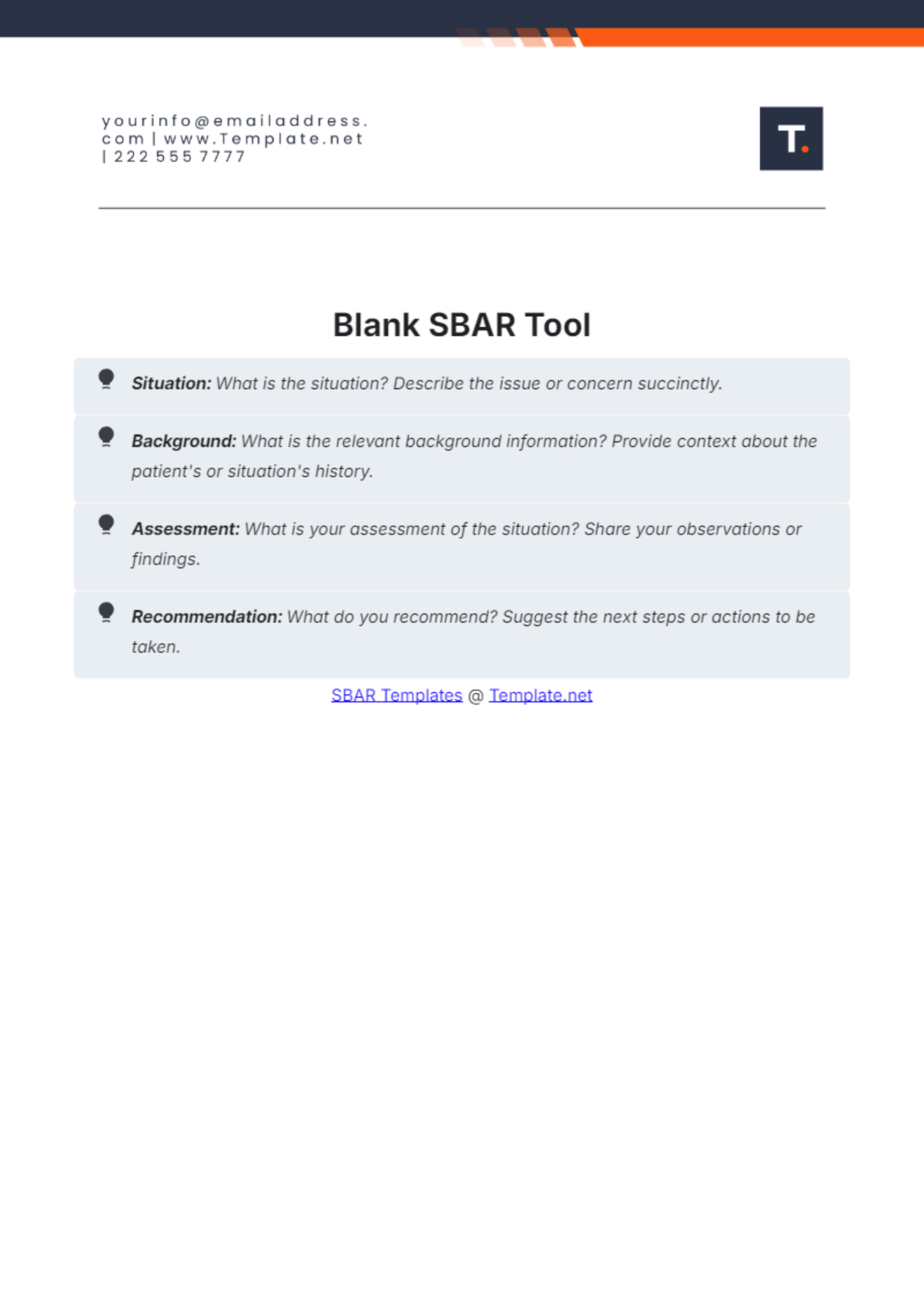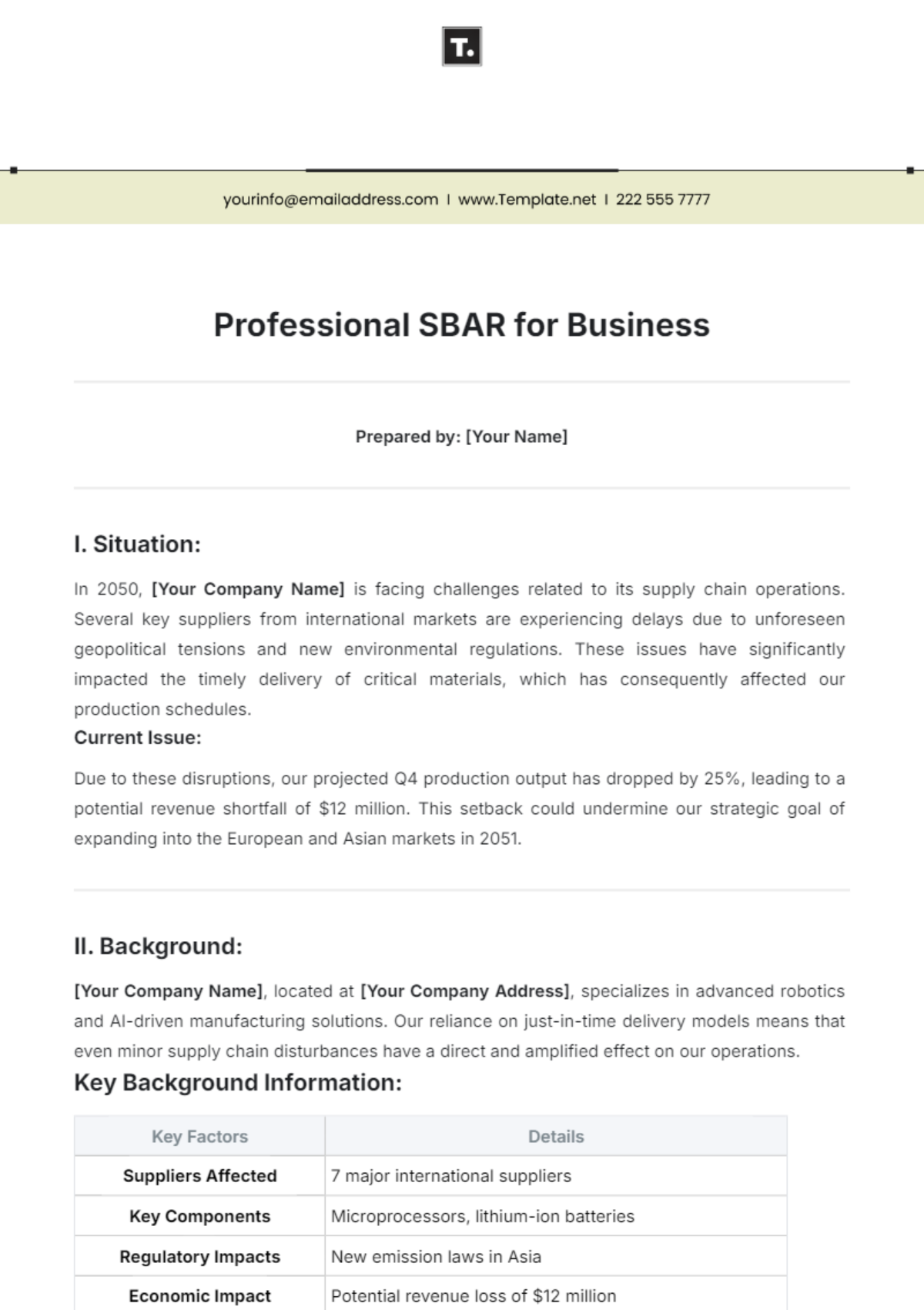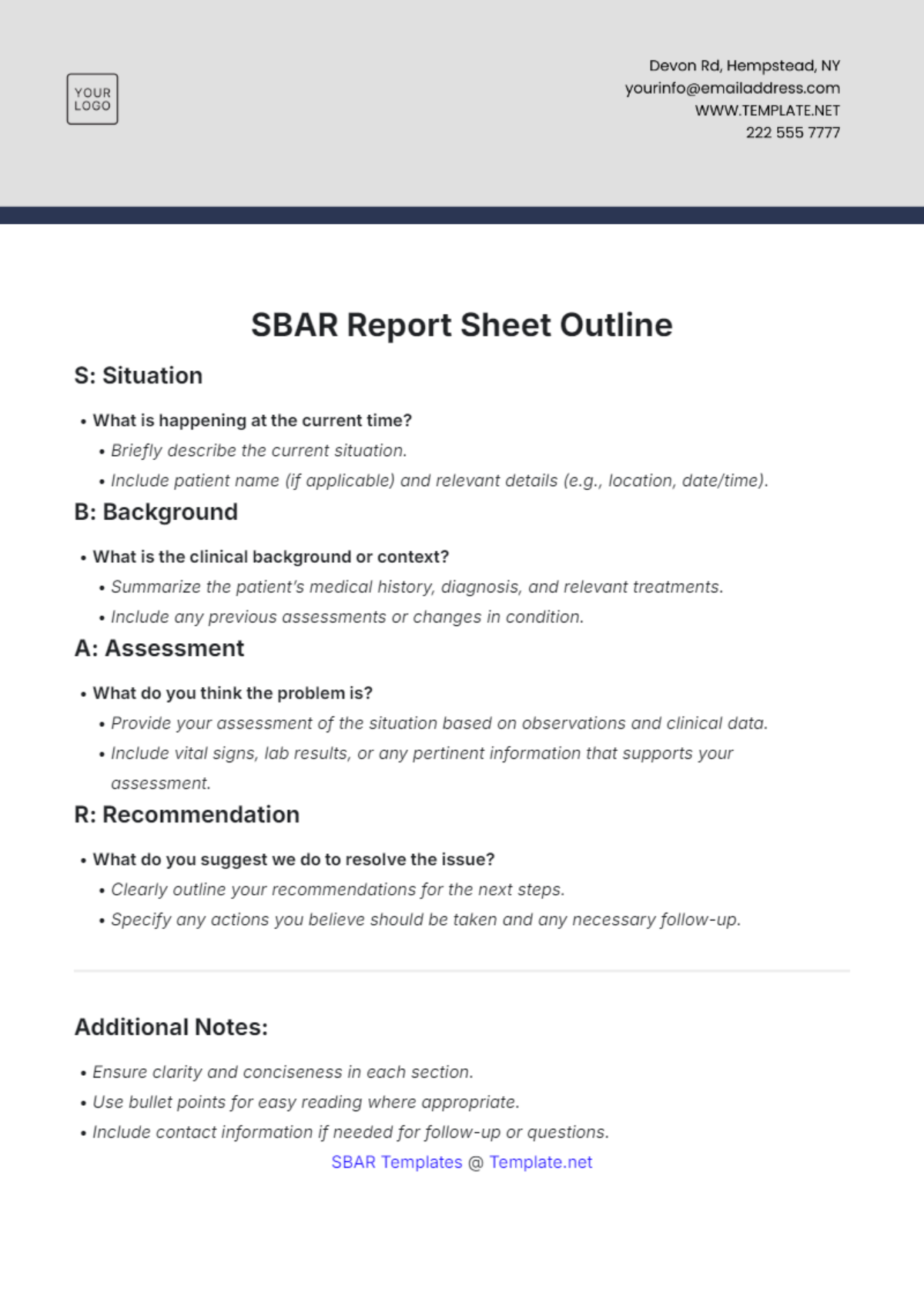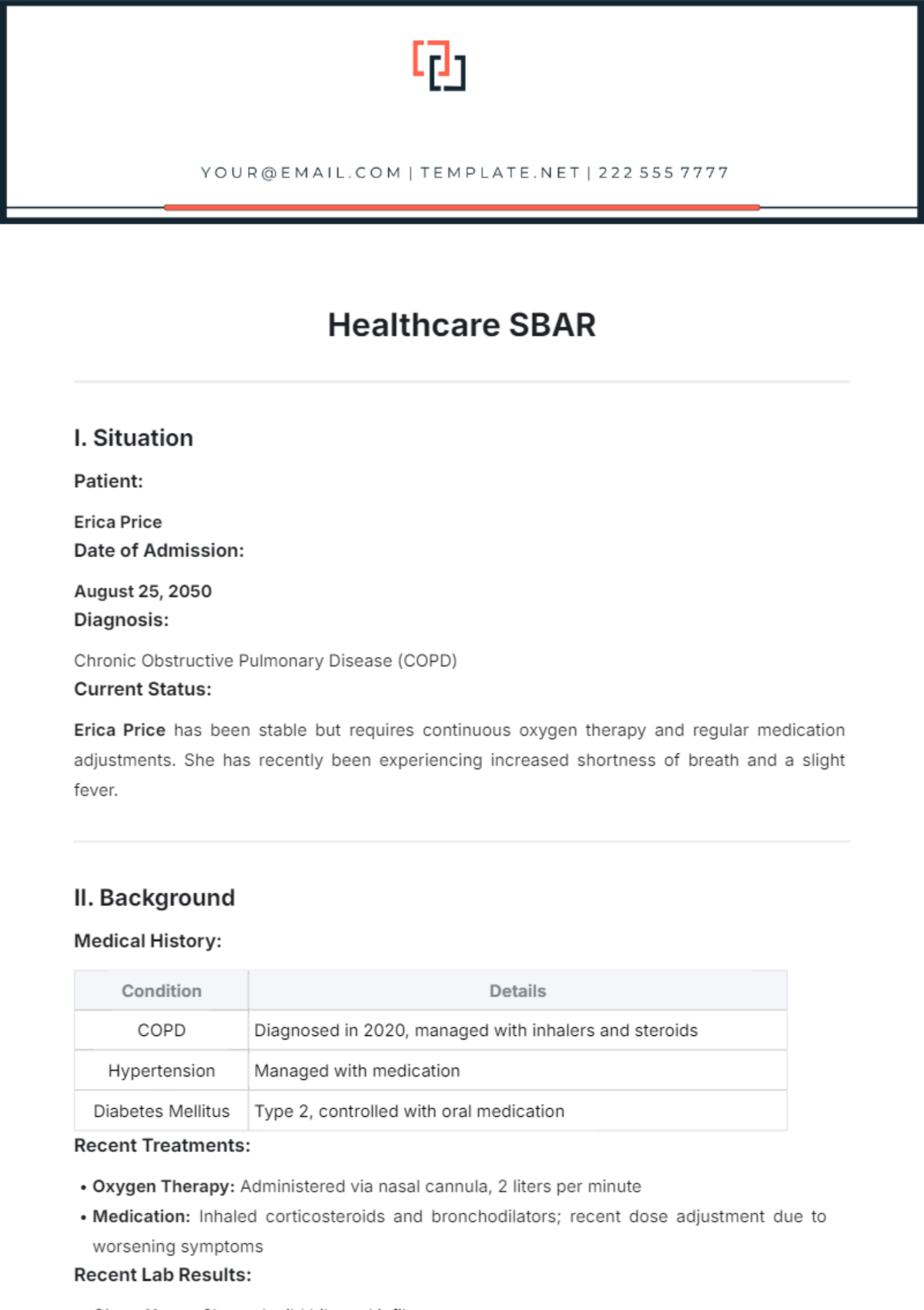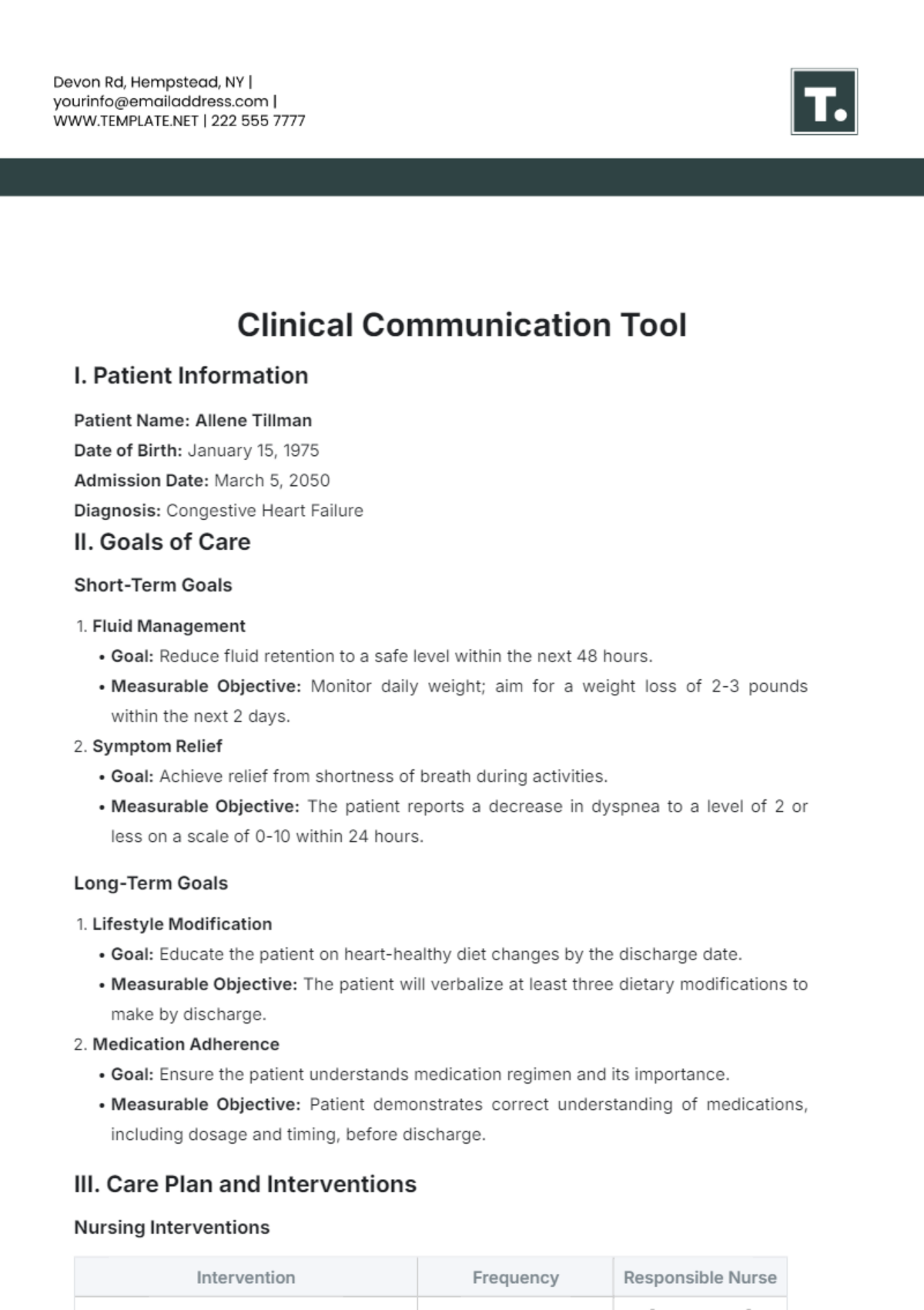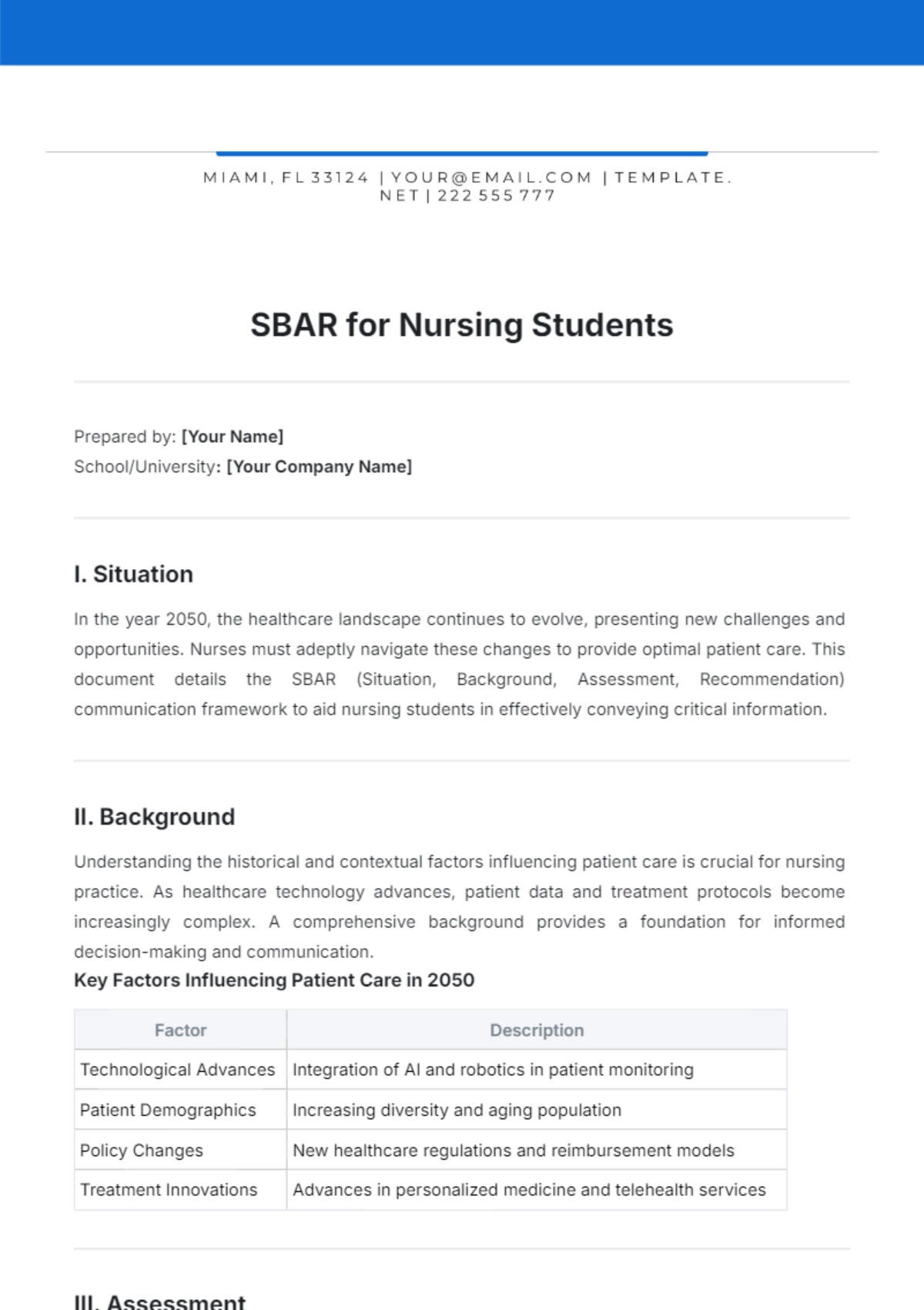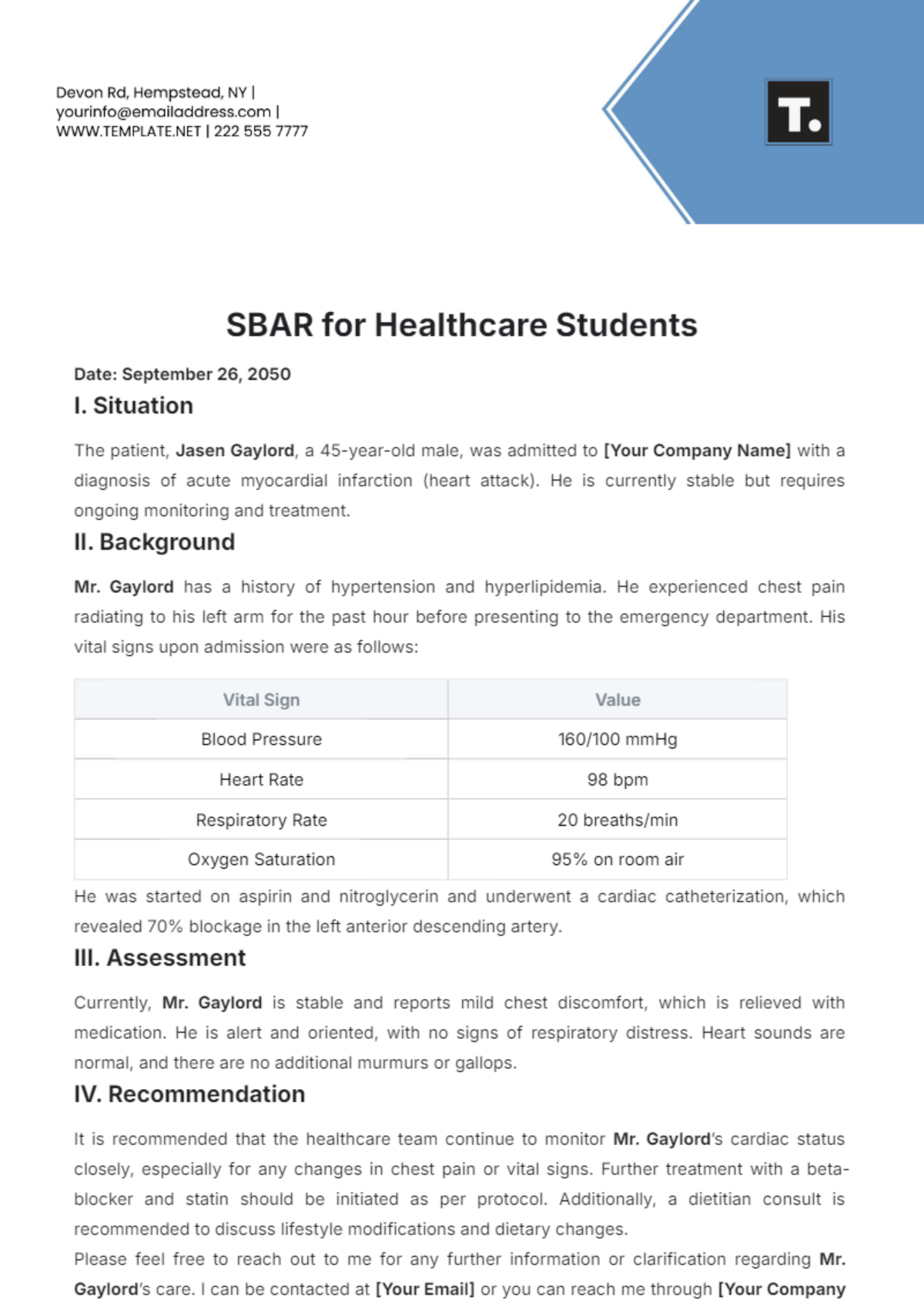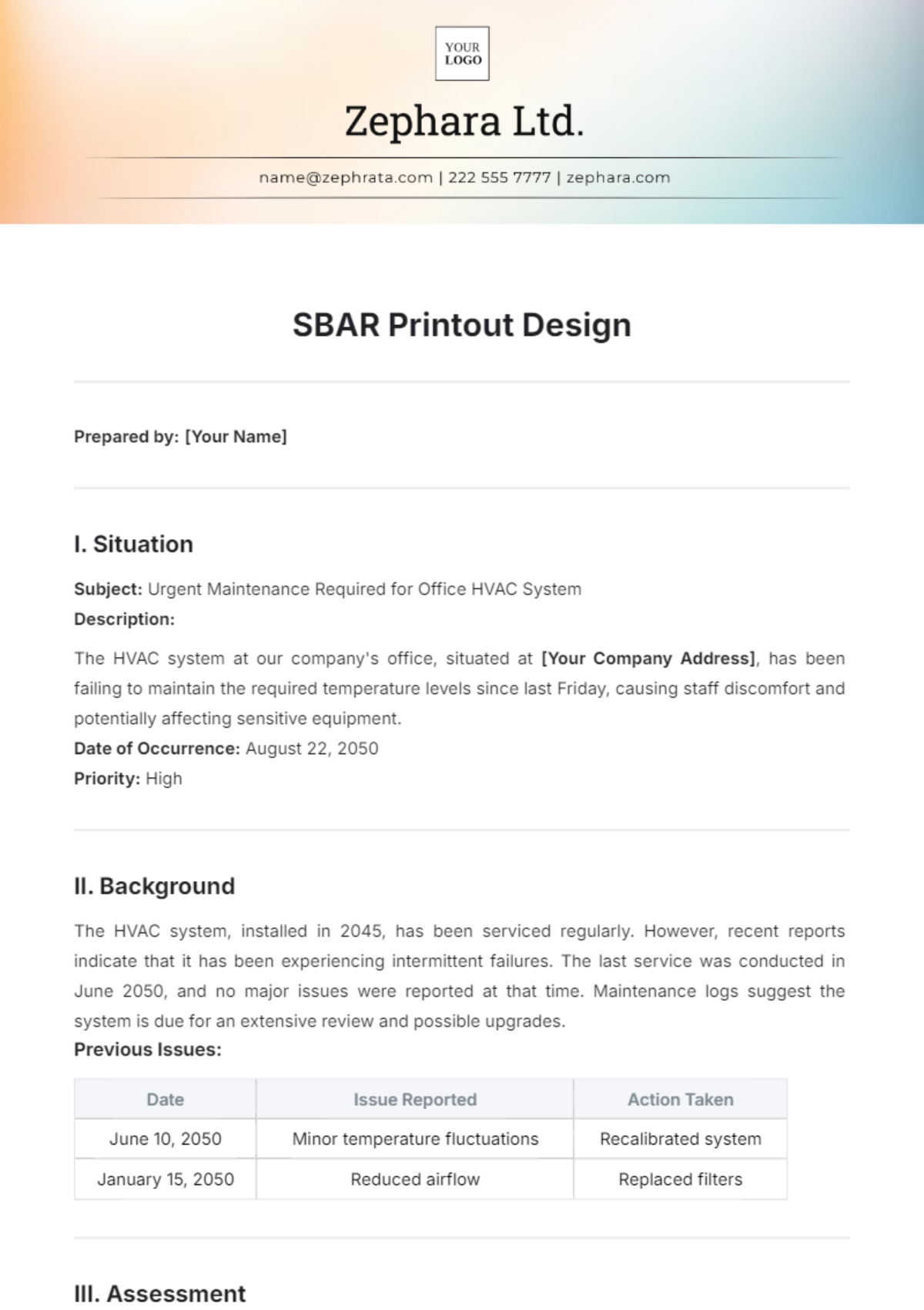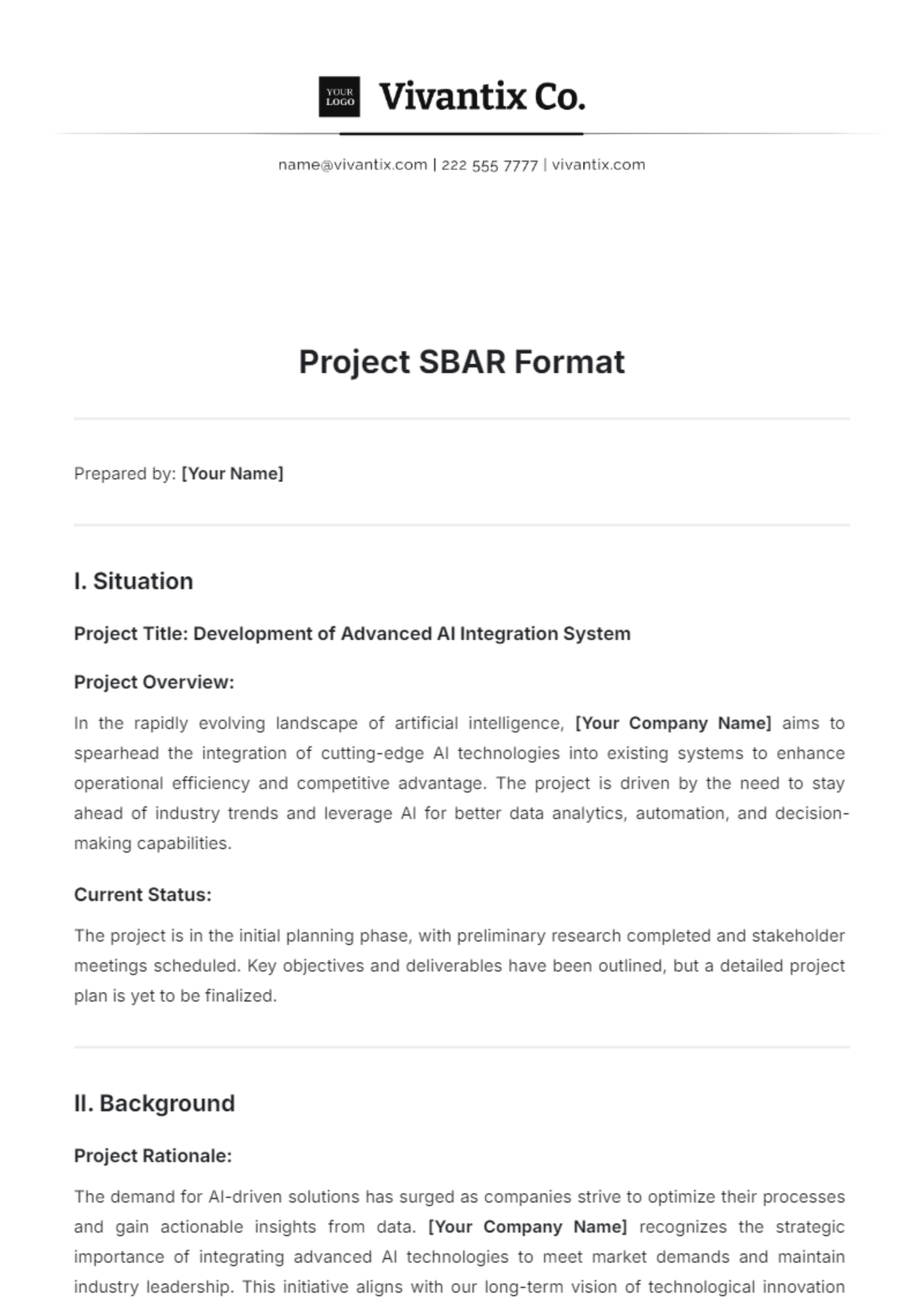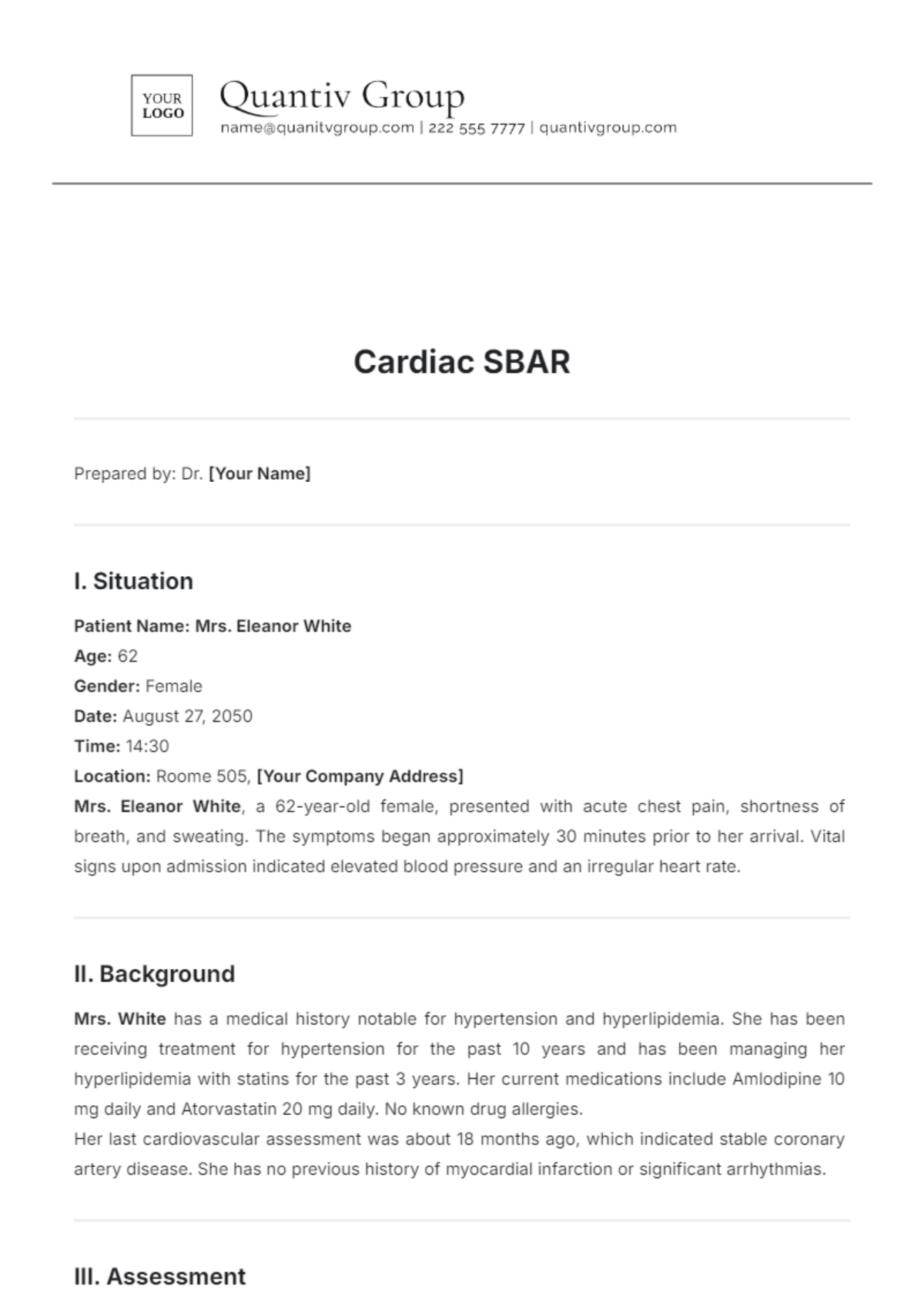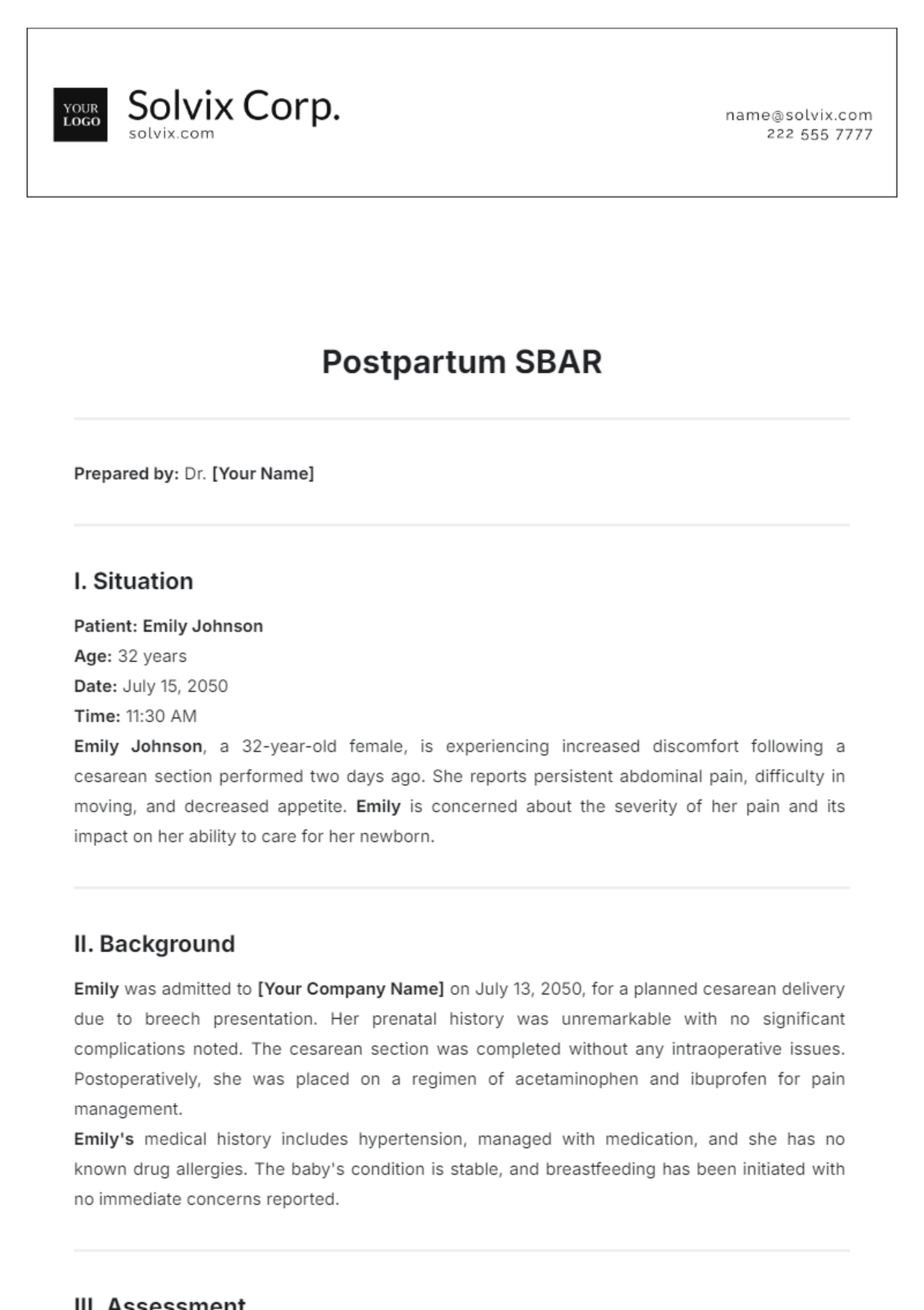OB SBAR Outline
Prepared by: [Your Name]
I. Overview
In the year 2050, the operational dynamics of [Your Company Name] have shifted considerably due to evolving industry standards and technological advancements. This overview captures the current state of affairs, illustrating the progress and challenges faced by the organization. It provides a snapshot of how [Your Company Name] is adapting to these changes and preparing for future developments.
Company Details:
Name: [Your Company Name]
Address: [Your Company Address]
Email: [Your Company Email]
Historical Context: [Your Company Name] was founded in 1985 and has grown to become a key player in the renewable energy sector. The company's journey over the past decades reflects its ability to innovate and remain relevant amidst changing market conditions.
Current Status: As of 2050, [Your Company Name] has achieved several milestones:
Integration of advanced solar panel technology and energy storage solutions
Expansion into markets in Africa and South America
Development of sustainable energy solutions with zero carbon emissions
Challenges: Despite achievements, challenges remain.
Navigating new environmental regulations across different regions
Managing supply chain complexities for critical components
Maintaining competitive advantage in a rapidly evolving industry
II. Situation
The situation facing [Your Company Name] is characterized by a combination of rapid technological advancements and shifting market demands. This section outlines the current circumstances impacting the organization and highlights the factors contributing to these developments.
Current Circumstances:
Technological Advancements: Adoption of advanced AI for energy management and next-generation battery technology.
Market Dynamics: Increased competition from new entrants and changing consumer expectations towards renewable energy.
Regulatory Landscape: New global regulations promoting stricter environmental standards and carbon neutrality.
Impact Analysis:
Factor | Impact on Company |
|---|---|
Technological Advancements | Enhanced efficiency and new opportunities |
Market Dynamics | Increased pressure to innovate and reduce costs |
Regulatory Landscape | Compliance with new standards and cost hikes. |
Strategic Response: To address these circumstances, [Your Company Name] has initiated several strategic measures, including investment in R&D, partnerships with technology firms, and enhanced compliance frameworks.
III. Background
Understanding the background of [Your Company Name] provides insight into the factors influencing its current situation and future trajectory. This section delves into the historical developments and organizational context that shape the company's present state.
Historical Developments:
Founding: [Your Company Name] was established with a focus on developing solar energy solutions.
Growth Milestones: Key achievements include the launch of the first high-efficiency solar panel in 1995, international expansion in 2010, and the introduction of advanced energy storage solutions in 2030.
Adaptation Strategies: Previous adaptations include the shift to digital management systems in 2005 and the adoption of AI technologies in 2040.
Organizational Context:
Leadership: The current leadership team includes CEO Dr. Emily Carter, CTO Mark Thompson, and CFO Sarah Patel.
Culture and Values: [Your Company Name] emphasizes innovation, sustainability, and integrity in its operations and decision-making processes.
IV. Assessment
The assessment section evaluates the effectiveness of the current strategies and their alignment with the company's goals. It provides an in-depth analysis of the company's performance and identifies areas for improvement.
Performance Metrics:
Metric | Current Status | Target | Remarks |
|---|---|---|---|
Revenue Growth | 8% annual growth | 10% annual growth | On track but requires focus |
Market Share | 15% globally | 20% globally | Increasing competition |
Customer Satisfaction | 85% positive | 90% positive | Needs improvement in service delivery |
Strengths:
Strong brand reputation as a leader in renewable energy
Innovative product portfolio with cutting-edge technology
Effective and visionary leadership team
Weaknesses:
Limited market penetration in emerging regions like Southeast Asia
Dependence on specific suppliers for critical components
Opportunities:
Expansion into new geographic markets such as Southeast Asia and the Middle East
Development of new product lines such as advanced wind turbines and smart grid solutions
Threats:
Economic downturns affecting global investment in renewable energy
Technological disruptions from new competitors
V. Recommendations
Based on the assessment, this section outlines the recommended actions to enhance [Your Company Name]'s performance and ensure long-term success. These recommendations are aimed at addressing the identified challenges and leveraging opportunities for growth.
Recommended Actions:
Invest in Market Research: Conduct comprehensive research to understand emerging market trends in regions like Southeast Asia and the Middle East.
Enhance R&D Efforts: Allocate additional resources to research and development to drive innovation in wind and solar technologies.
Strengthen Supplier Relationships: Diversify the supplier base to reduce dependency and mitigate risks associated with component shortages.
Expand Marketing Strategies: Implement targeted marketing campaigns to increase brand visibility and market penetration in new regions.
Implementation Plan:
Short-term Goals (1-2 years): Immediate actions to address critical issues such as supplier diversification and market research.
Medium-term Goals (3-5 years): Strategic initiatives including product line expansion and market entry strategies.
Long-term Goals (5+ years): Visionary plans for sustained success and leadership in the global renewable energy market.
